INVITED REVIEW
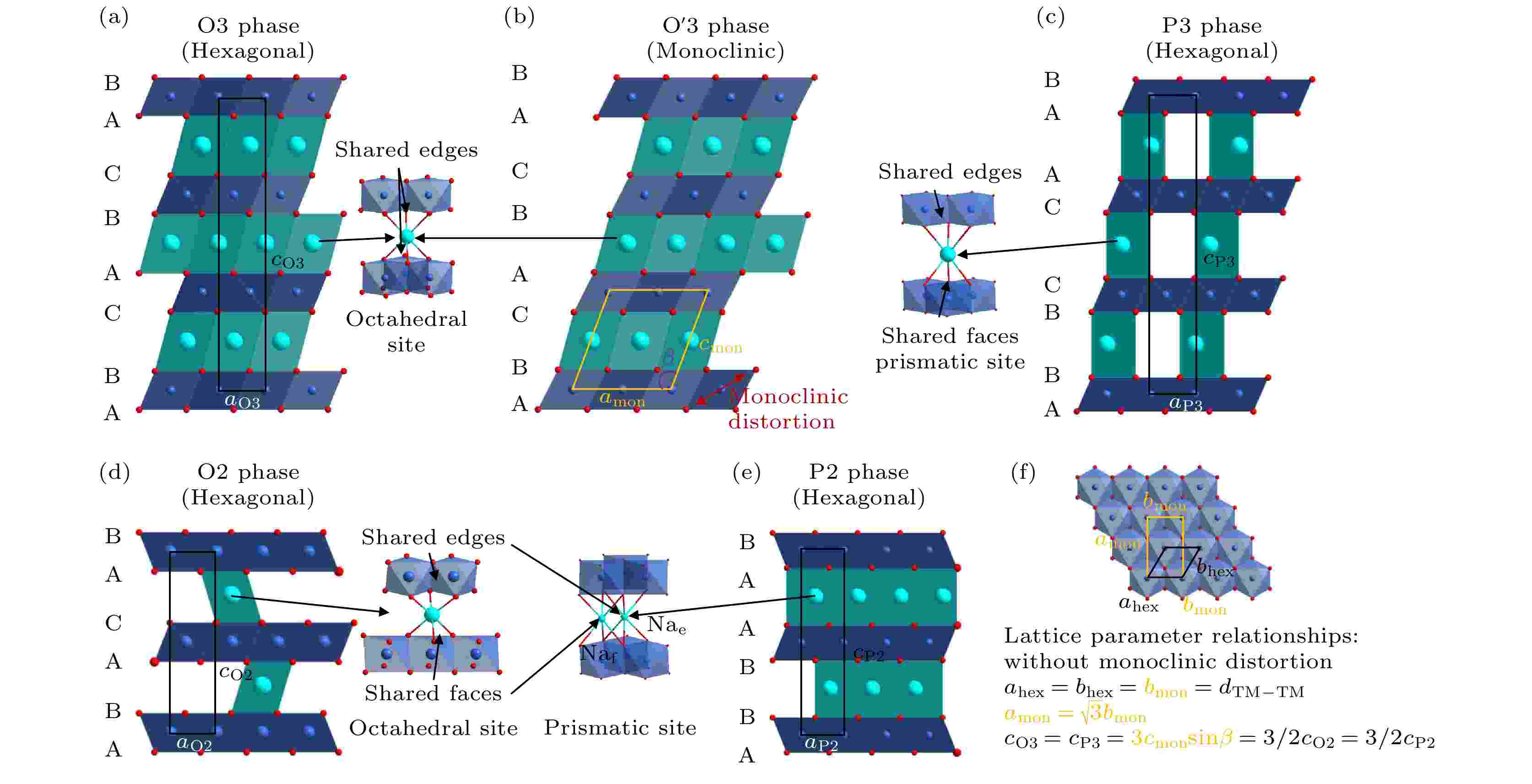
INVITED REVIEW
2022, 71 (10): 108801.
doi:10.7498/aps.71.20220291
Abstract +
Na-ion batteries possess great potential applications in the large-scale energy storage. The Na-ion layered oxide cathode (NaxTMO2) has received increasing attention in scientific and industrial research due to its high capacity, easy manufacture, adjustable voltage, and low cost. However, the larger the Na+radius and the stronger the Na+-Na+electrostatic repulsion is, which will lead to various structural configurations and complex structural transitions, resulting in multiple structure-property connections. In this paper, the structural types of Na-ion layered transition metal oxide cathode materials are introduced, and their structural evolutions during Na+de/intercalation are summarized for revealing the mechanism for structural transformation of Na-ion layered transition-metal oxide cathode material and its effect on electrochemical performance; the existing challenges are discussed; the improvement strategies are proposed finally.
SPECIAL TOPIC—Scalable production of two-dimensional materials
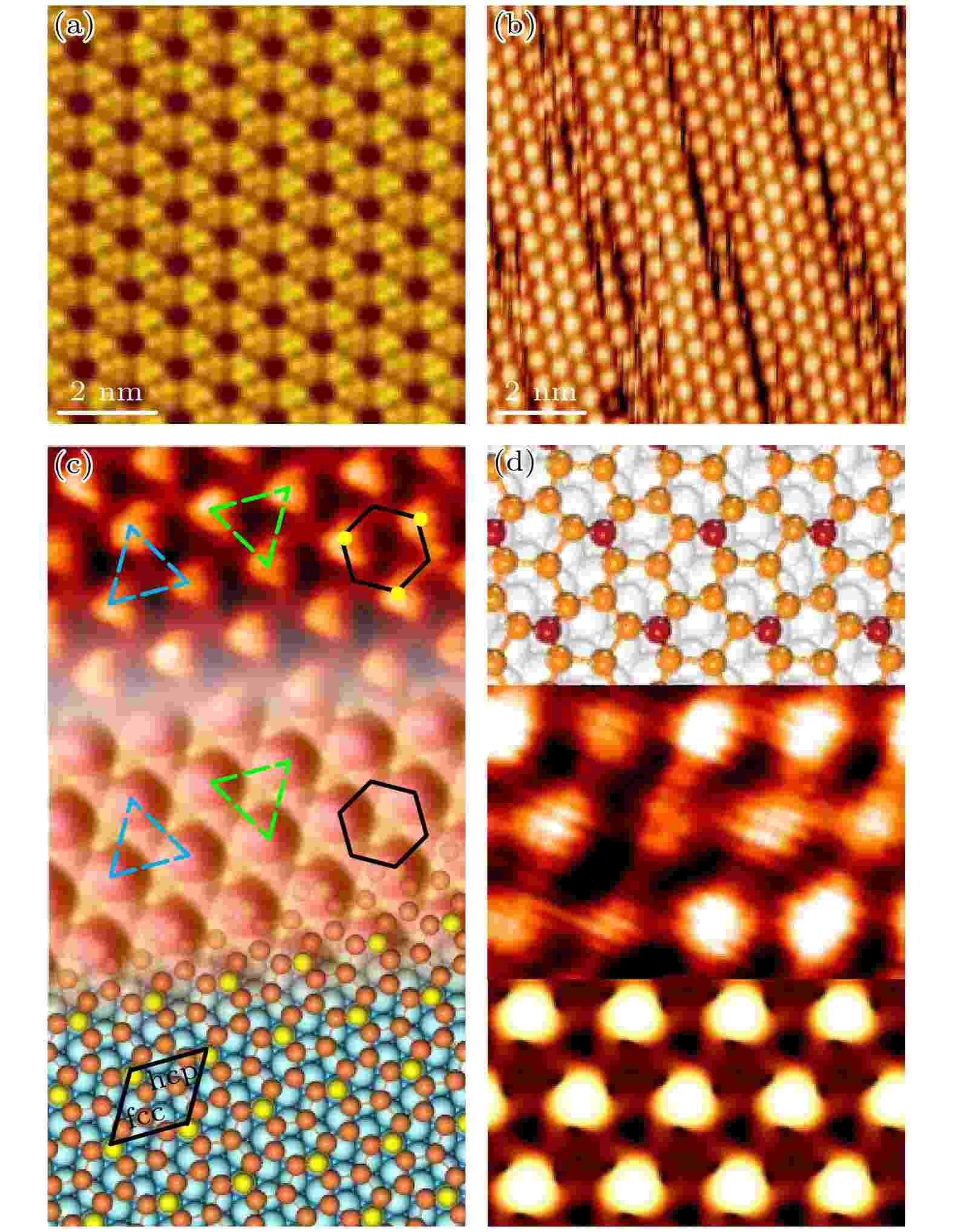
EDITOR'S SUGGESTION
2022, 71 (10): 106801.
doi:10.7498/aps.71.20212407
Abstract +
Compared with the three-dimensional bulk materials, two-dimensional (2D) materials exhibit superior electronic, optical, thermal, and mechanical properties due to the reduced dimensionality. The quantum confinement effect of 2D materials gives rise to exotic physical properties, and receives extensive attention of the scientists. Lots of routes to fabricate the 2D materials have been proposed by the material scientists, including the traditional mechanical exfoliation, chemical vapor deposition, molecular beam epitaxy under ultra-high vacuum (UHV), and so on. Among them, fabricating materials under ultra-high vacuum has the advantages of constructing large-scale and high-quality samples, and is therefore widely adopted in the 2D material growth. In this paper, we review three different strategies of growing 2D materials under UHV conditions, including molecular beam epitaxy, graphene intercalation and manual manipulation by nano probes. We compare the advantages and drawbacks among those methods in creating 2D materials, and try to provide some guidance to the community, especially those who are new to the field.
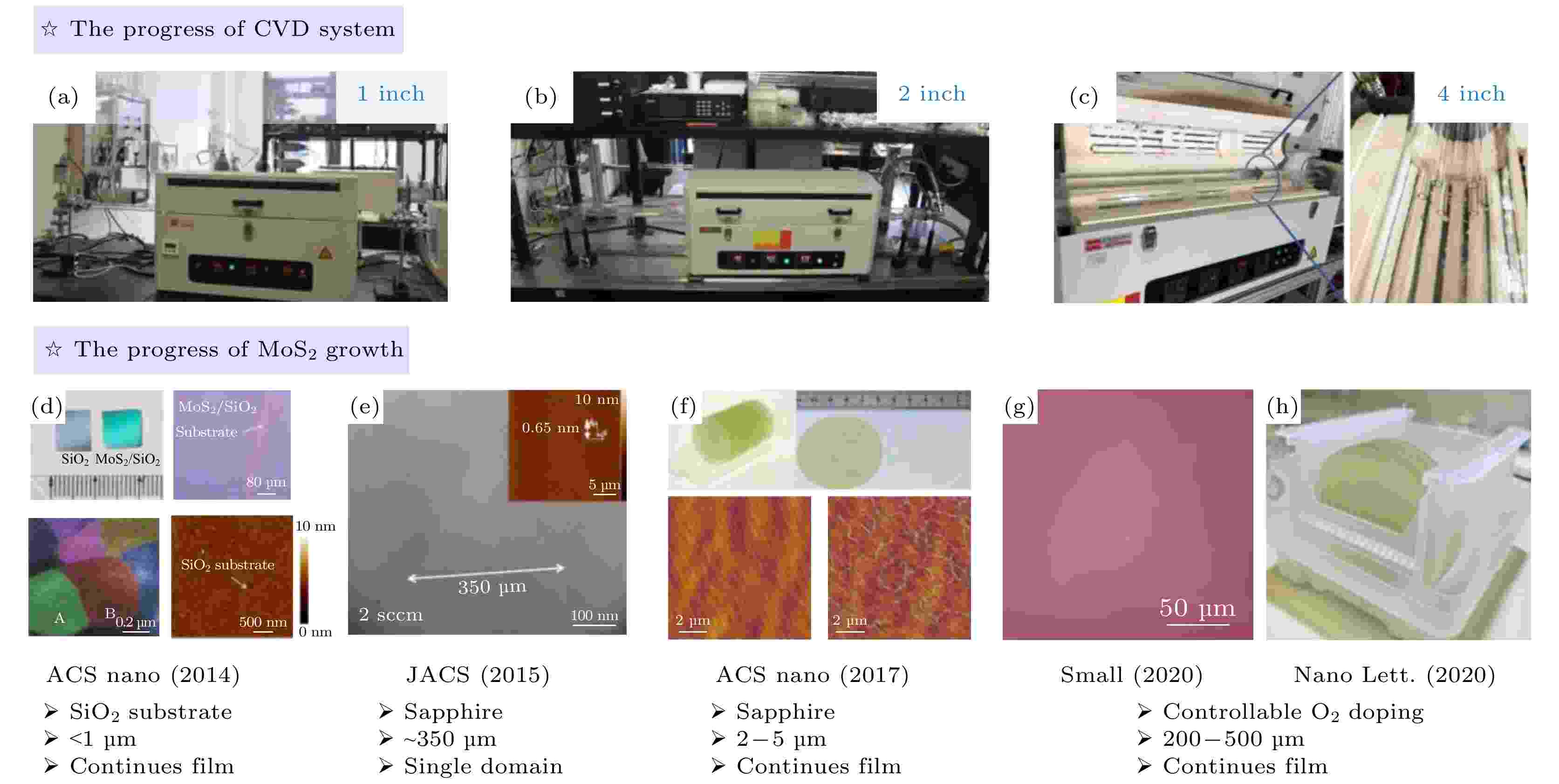
EDITOR'S SUGGESTION
2022, 71 (10): 108102.
doi:10.7498/aps.71.20212447
Abstract +
Monolayer molybdenum disulfide (MoS2) is an emerging two-dimensional (2D) semiconductor material.The MoS2film has a natural atomic-level thickness, excellent optoelectronic and mechanical properties, and it also has the potential applications in very large-scale integration technology in the future. In this article we summarize the research progress made by our group in the studying of monolayer MoS2films in the past few years. The controlled growth of large-size MoS2single crystals is achieved by oxygen-assisted chemical vapor deposition method. By a unique facile multisource CVD growth method, the highly oriented and large domain size ML MoS2films are epitaxially grown on a 4-inch wafer scale. Almost only 0° and 60° oriented domains are present in films, and the average size of MoS2grains ranges from 100 μm to 180 μm . The samples exhibit their best optical and electrical quality ever obtained, as evidenced from their wafer-scale homogeneity, nearly perfect lattice structure, average room-temperature device mobility of ~70 cm2·V–1·s–1and high on/off ratio of ~109on SiO2substrates. By adjusting the oxygen doping concentration in the MoS2film through using an effective CVD technique, electrical and optical properties can be well modified, thereby greatly improving the carrier mobilities and controllable n-type electronic doping effects resulting from optimized oxygen doping levels of MoS2–xOx. In terms of MoS2thin film devices and applications, the 4-inch wafer-scale high-quality MoS2monolayers are used to fabricate the transparent MoS2-based transistors and logic circuits on flexible substrates. This large-area flexible FET device shows excellent electrical performance with a high device density (1,518 transistors per cm2) and yield (97%), and exhibits a high on/off ratio (1010), current density (~35 μA·μm–1), mobility (~55 cm2·V–1·s–1) and flexibility. Based on the vertically integrated multilayer device via a layer-by-layer stacking process, an individual layer of all-2D multifunctional FET is successfully achieved with nearly multiplied on-current density, equivalent device mobility, and persevered on/off ratio and subthreshold swing (SS) of the individual layer, the combined performance of the device is fully utilized, and the integration of “sensing-storing-computing” is realized. A two-terminal floating-gate memory (2TFGM) based artificial synapse built from all-2D van der Waals materials is prepared, the 2TFGM synaptic device exhibits excellent linear and symmetric weight update characteristics with high reliability and tunability. A large number of states of up to ≈3000, high switching speed of 40 ns and low energy consumption of 18 fJ for a single pulse are demonstrated experimentally. The introduction of structural domain boundaries in the basal plane of monolayer MoS2can greatly enhance its hydrogen evolution reaction performance by serving as active sites. The progress we have made in the preparation of monolayer MoS2films and the research on device characteristics is of guiding significance for the basic and application research of MoS2, and also is universal and instructive for other 2D transition metal dichalcogenides.

EDITOR'S SUGGESTION
2022, 71 (10): 108103.
doi:10.7498/aps.71.20212399
Abstract +
With the shrinkage of the chip feature size, the short-channel effect becomes more and more predominate. The development of new quantum materials for high-performance devices has become imperative for the current technological development. Two-dimensional (2D) materials, due to their excellent physical and chemical properties, are thought to be the promising candidate of quantum materials for achieving the high-end electronic and optoelectronic devices. Like the development of silicon-based chips, the wafer-scale device applications of 2D materials must be based on the fabrication of high-quality, large-size 2D single crystals. However, the existing manufacturing techniques of the well-studied bulk single crystals cannot be fully applied to the fabrication of 2D single crystals due to the interfacial characteristics of 2D materials. So far, single crystals of metre-sized graphene, decimetre-sized hBN and wafer-sized TMDCs have been successfully prepared by chemical vapor deposition, but the sizes of other 2D single crystals are still very limited and not in the same league as conventional semiconductor materials. Therefore, it is urgent to develop an effective preparation strategy for the manufacture of various 2D single crystals. In this review, we mainly overview the fabrication techniques for the meter-scale growth of 2D single crystals, and propose three key modulation aspects in the atomic-scale manufacture, i.e. the growth modulation of 2D single nucleus, the preparation of single-crystal substrates, and the alignment control of 2D single-crystal domains, in order to provide a universal method of fabricating the large-size 2D single crystals. Finally, the prospect of chip devices based on these high-quality large-size novel 2D single crystals is discussed, thereby paving the way for the future industrial applications of electronics and optoelectronics.
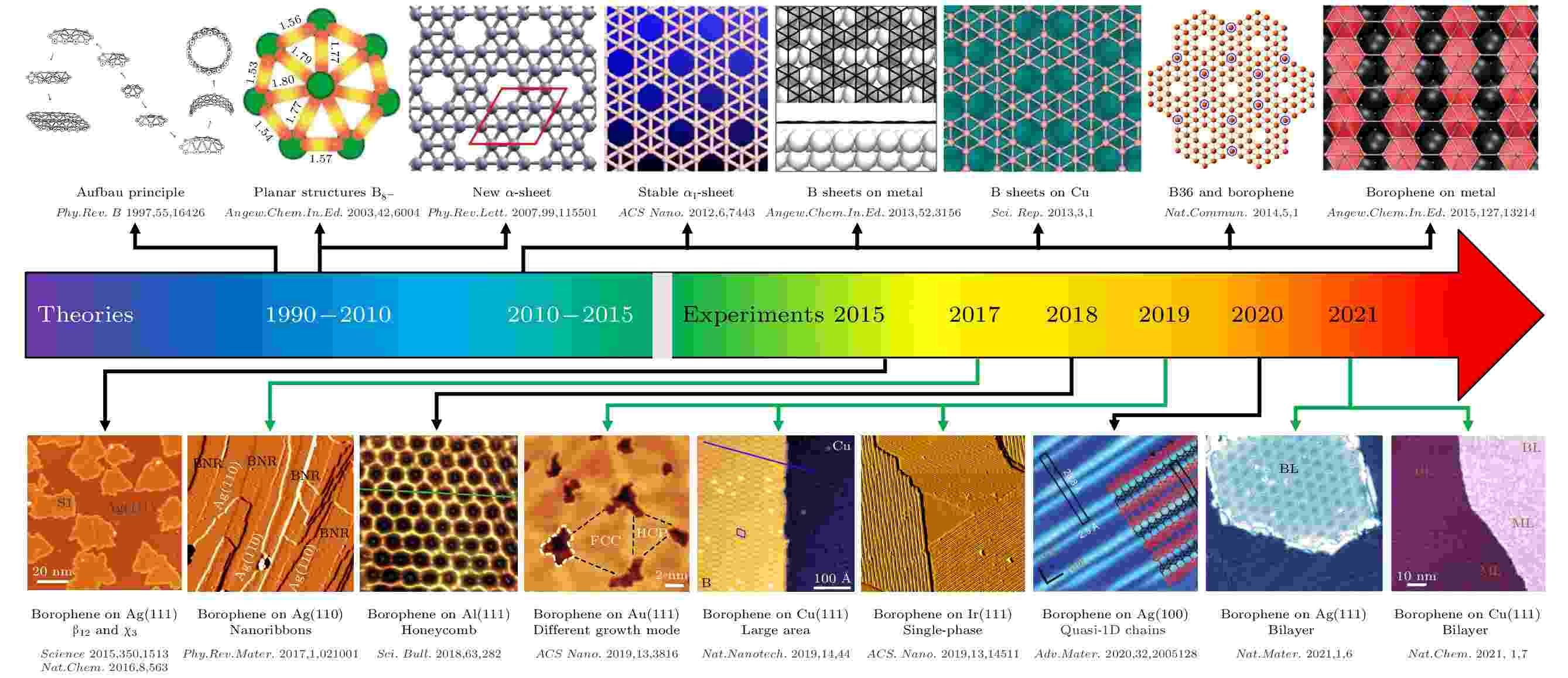
EDITOR'S SUGGESTION
2022, 71 (10): 108104.
doi:10.7498/aps.71.20220155
Abstract +
As the lightest two-dimensional material discovered so far, borophene exhibits rich physical properties, including high flexibility, optical transparency, high thermal conductivity, one-dimensional nearly free electron gas, Dirac fermions, and superconductivity. However, due to the strong interlayer covalent bonding force of bulk boron, it is difficult to obtain the monolayer borophene via mechanical exfoliation. In addition, due to the electron-deficient property of boron atoms, its chemical properties are relatively active, and its bonding is complex, resulting in different boron allotropes, which is different from other two-dimensional materials. For a long time, the research on borophene has been limited to theoretical exploration, and it has been difficult to make breakthroughs in the experimental synthesis of two-dimensional borophene. It has been only successfully prepared by a few research groups in recent years. However, there is still huge space for exploration on the growth, structure and electronic properties of borophene. This paper systematically reviews the preparation methods and different structures of borophene under different substrates, and its growth mechanism is discussed. It provides a research platform for further expanding the physical properties of borophene, and provides ideas for exploring the preparation of borophene nanodevices. It has great potential application prospects in high energy storage, optoelectronic devices, high detection sensitivity, and flexible nanodevices.
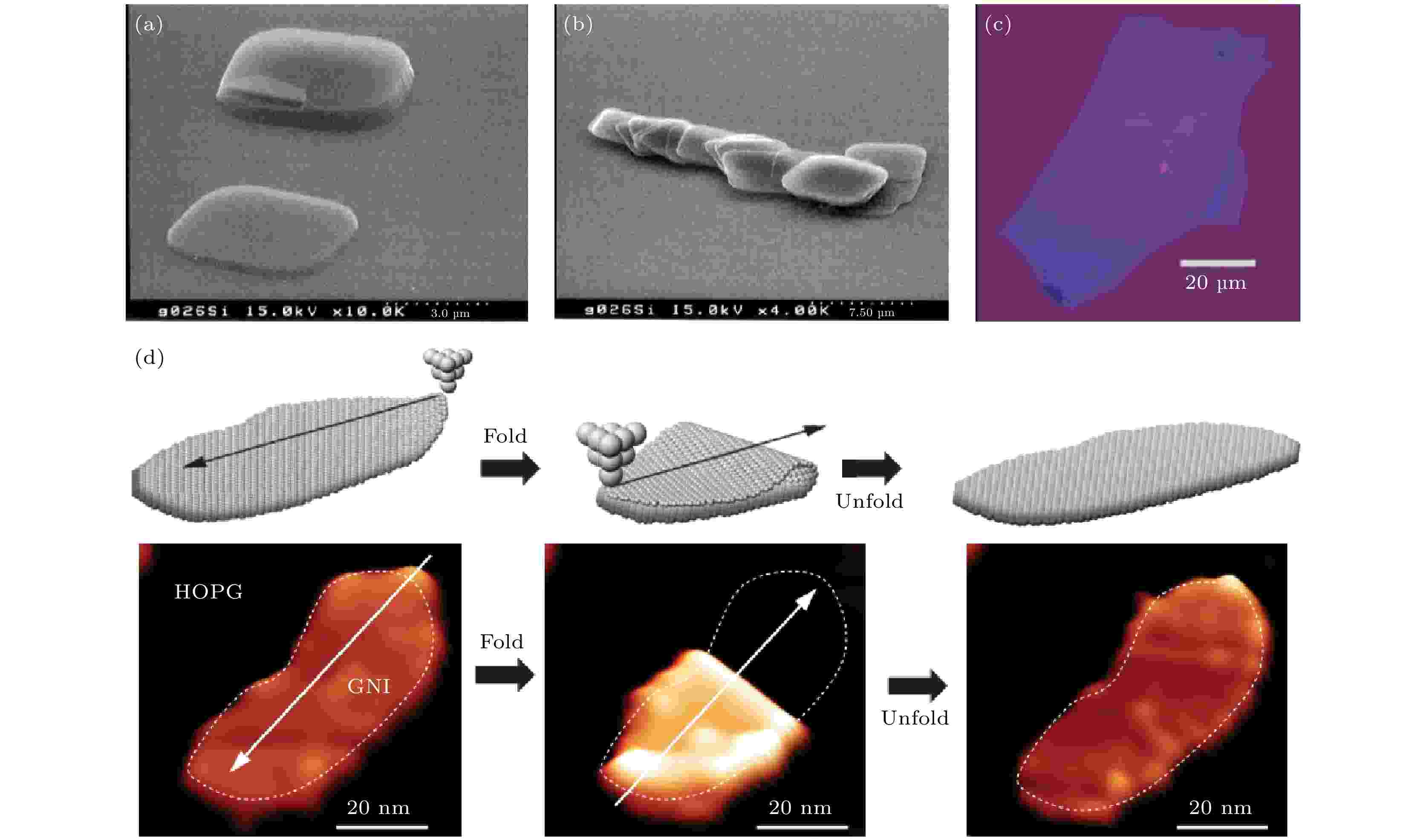
EDITOR'S SUGGESTION
2022, 71 (10): 108201.
doi:10.7498/aps.71.20220030
Abstract +
Since the monolayer graphene was first obtained in the year of 2004, mechanical exfoliation technique has been widely used to prepare various two-dimensional materials such as transition metal dichalcogenides and black phosphorus. Among a variety of preparation techniques of two-dimensional materials, mechanical exfoliation technique shows advantages in its simplicity and universality. More importantly, the exfoliated two-dimensional samples are the ideal ones for many novel phenomena. This paper introduces the background of mechanical exfoliation technique and summarizes the problems of conventional mechanical exfoliation technique in the development of two-dimensional materials. In order to solve the problems of low efficiency and small sample size of conventional mechanical exfoliation technique, some modified mechanical exfoliation techniques have been developed, such as oxygen-plasma-assisted exfoliation method and gold-film-assisted exfoliation method. As a commonly used “top-down” preparation method, the new exfoliation technology is still full of vitality in basic research and application of two-dimensional materials. In the future, larger size and higher quality will be the development direction of exfoliation technology.
GENERAL
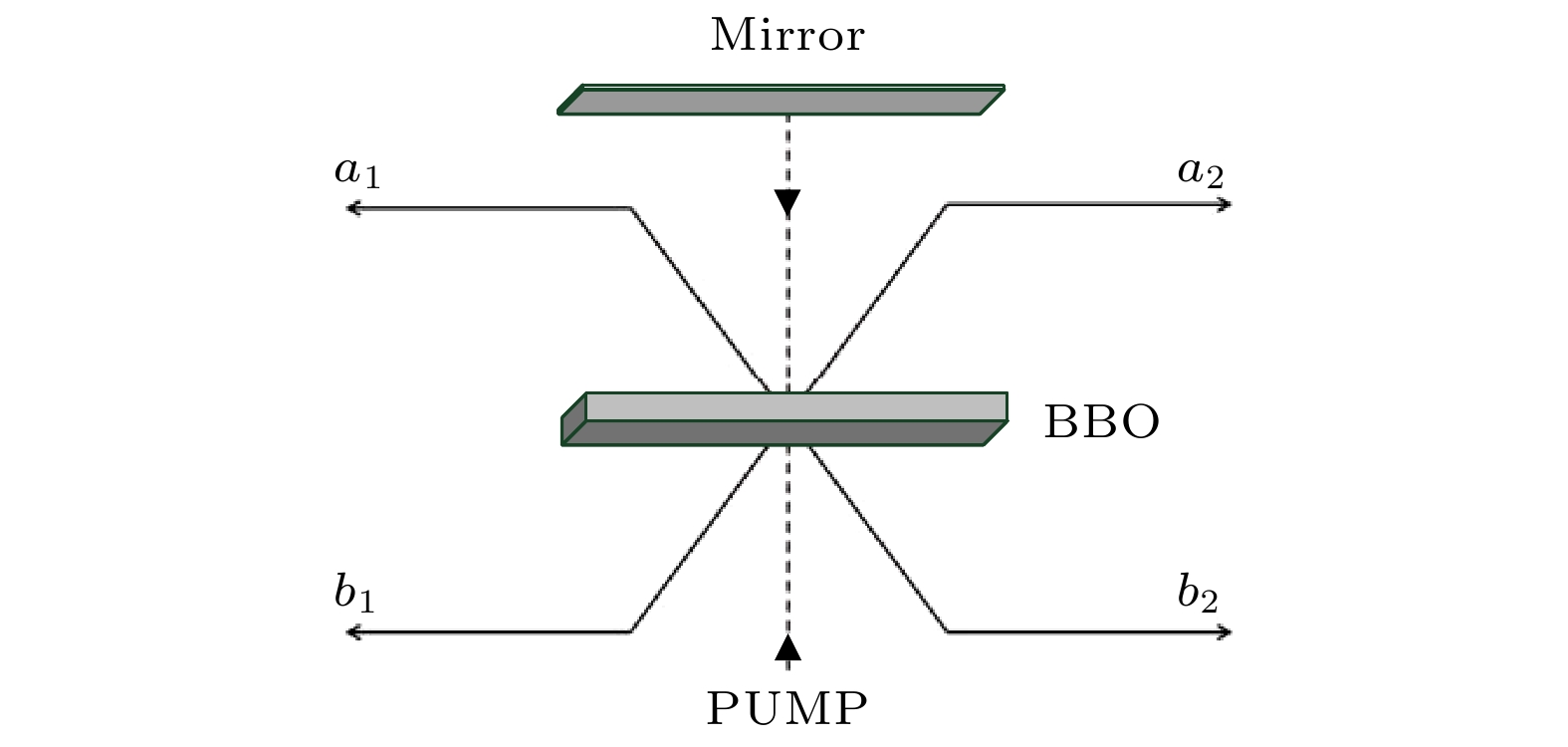
2022, 71 (10): 100301.
doi:10.7498/aps.71.20212173
Abstract +
Entanglement swapping (ES) based multi-hop quantum information transmission is a fundamental way to realize long-distance quantum communication. However, in the conventional quantum networks, the entanglement in one degree of freedom (DOF) of photon system is usually used as a quantum channel, showing disadvantages of low capacity and susceptibility to noise. In this paper, we present an efficient multi-hop quantum hyperentanglement swapping (HES) method based on hyperentanglement, which utilizes the entangled photos in polarization and spatial-mode DOFs to establish the hyperentangled multi-hop quantum channel. Taking long-distance hyperentanglement based quantum teleportation for example, we first describe a basic hop by hop HES scheme. Then, in order to reduce the end-to-end delay of this scheme, we propose a simultaneous HES (SHES) scheme, in which the intermediate quantum nodes perform hyperentangled Bell state measurements concurrently. On the basis of this scheme, we further put forward a hierarchical SHES (HSHES) scheme that can reduce the classical information cost. Theoretical analysis and simulation results show that the end-to-end delay of HSHES is similar to that of SHES, meanwhile, the classical information cost of HSHES is much lower than that of SHES, showing a better tradeoff between the two performance metrics. Compared with the traditional ES methods, the scheme proposed in this paper is conductive to meeting the requirements for long-distance hyperentanglement based quantum communication, which has positive significance for building more efficient quantum networks in the future.
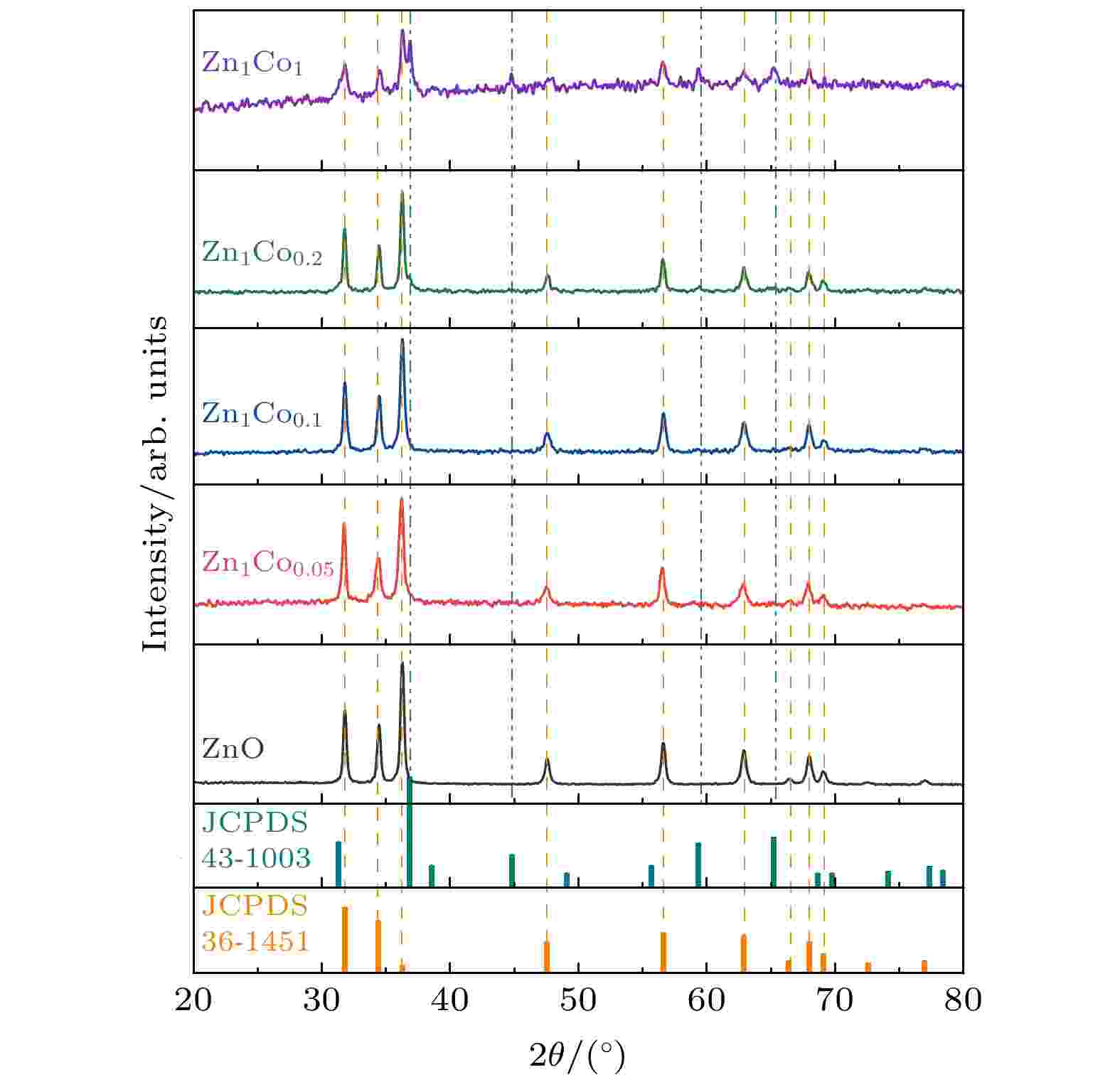
2022, 71 (10): 100701.
doi:10.7498/aps.71.20212114
Abstract +
Metal-organic-framework(MOF)-derived pure ZnO and ZnO/Co3O4composite microstructures with different ratios are prepared by the sol-vothermal method. The crystalline structure, morphology and chemical composition for each of the prepared micro-structures are analyzed by X-ray diffraction (XRD), scanning electron microscopy (SEM), X-ray energy dispersive spectroscopy (EDS), X-ray photoelectron spectroscope (XPS), and surface area analyzer respectively. The Gas sensors based on the as-prepared materials are fabricated and their performances of sensing various gases are investigated. The measurement results show that most of the gas sensors exhibit the highest responses to cyclohexanone gas within the test temperature range, and the composite with an appropriate amount of Co3O4can obviously promote the cyclohexanoe-sensing property of ZnO microstructure. The response values of ZnO/Co3O4composite microstructures to cyclohexanone first increase and then decrease with Co3O4content increasing. The ZnO/Co3O4composite microstructure sensor with a zinc-to-obalt ratio of 1∶0.1 shows that its value of response to cyclohexanone with a volume fraction of 100 × 10–6at the optimum working temperature (250 ℃) can arrive at 161, which is 6.4 times higher than that of ZnO microstructure under the same condition. Besides, its response and recovery time are 30 s and 35 s, respectively. This excellent detection performance is attributed mainly to the synergy effect between ZnO and Co3O4. The work has an important application value in the high-performance detection of cyclohexanone.

COVER ARTICLE
2022, 71 (10): 100702.
doi:10.7498/aps.71.20212360
Abstract +
Non-equilibrium transition dynamics under high pressure depends on temperature, pressure and (de)compression rate. The studies require combination of time-resolved probe and rapid compression device on different time scales. Here we report the time-resolved X-ray diffraction (XRD) and dynamic diamond anvil cell (dDAC) system, which were recently developed at the BL15U1 beamline of Shanghai Synchrotron Radiation Facility (SSRF). There are two rapid loading methods for dDAC. One uses membrane control and the other is piezoelectric actuator driven dDAC. Both methods can dynamically compress the DAC sample chamber up to 300 GPa on millisecond scale (20 μm culet is used), and the time-resolved XRD data are obtained correspondingly. A new type of piezoelectric ceramic dDAC is designed with single-side drive or double-side drive, which allows us to realize extremely high pressure (above 300 GPa) with a fast compression rate of 13 TPa/s. During the rapid compression process, the X-ray diffraction spectra are collected continuously and simultaneously. The XRD detector is Pilatus 3X 900K, which has 2-ms resolution with 500 kHz frame rate. The millisecond time-resolved XRD and high pressure rapid compression system developed at BL15U1 of SSRF enrich the high-pressure experimental methods and enable the beamline to carry out ultra-high pressure experiments, non-equilibrium phase transition and relevant scientific researches.
NUCLEAR PHYSICS
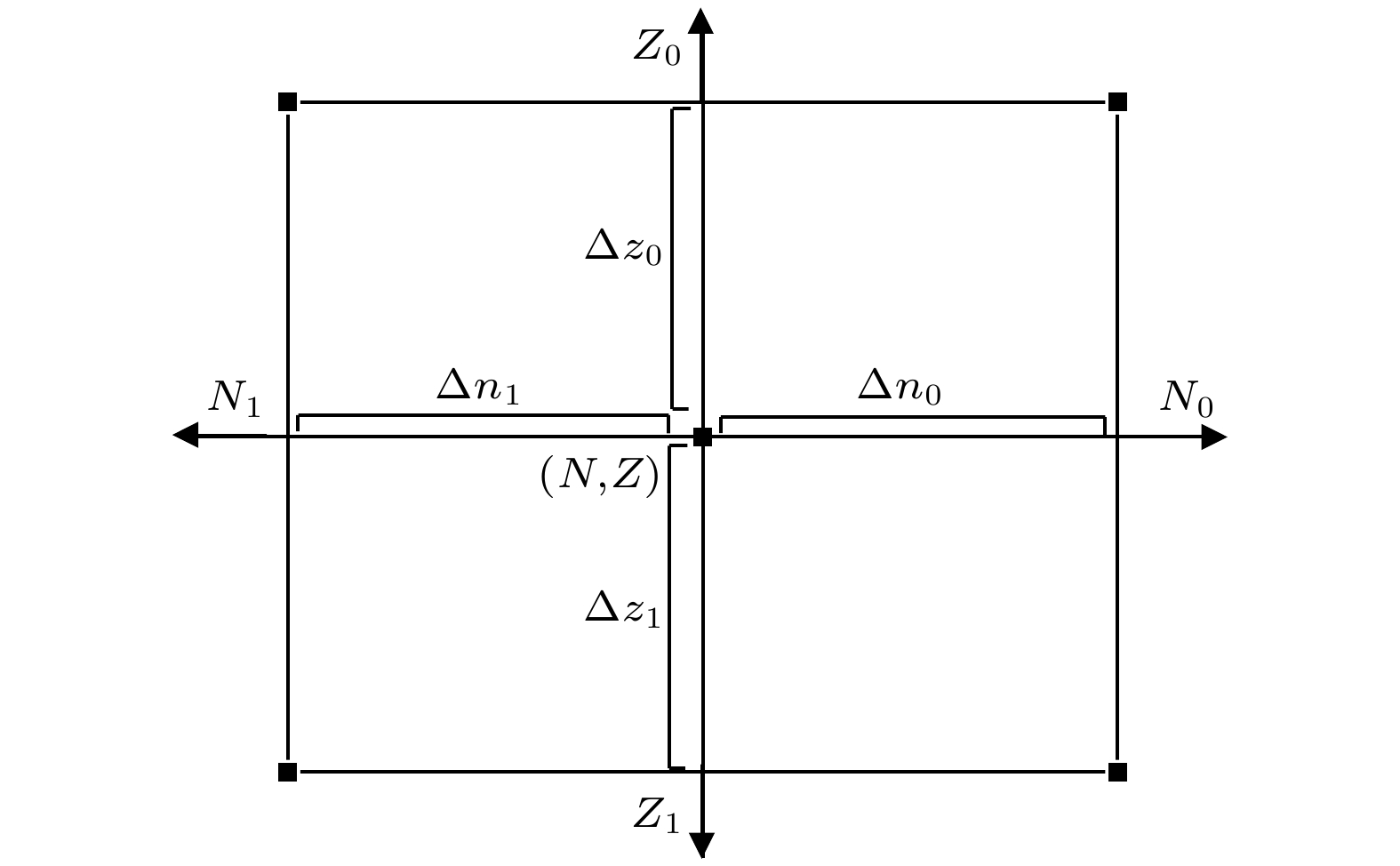
2022, 71 (10): 102101.
doi:10.7498/aps.71.20212387
Abstract +
Liquid drop model accuracy is optimized 80% by Bayesian deep neural network (BDNN) to calculate the known nuclei binding energies and also used to predicate extra unknown nucleus. In this paper, KL(Kullback-Leibler) divergence from BDNN is adopted and further optimized by the variational reasoning method. The latest atomic data (AME 2020) is taken as input to train the BDNN, the root means square(RMS) of 2457 types known nuclei (
$Z\geqslant 8$
and
$N\geqslant 8$
) calculation is improved 80% (from 2.9894 MeV to 0.5695 MeV). Additionally, we improved the input of BDNN in this work, so that the unknown nucleus (Z= 118–126) can be limited in a region(Regional restriction strategy), which improves the stability of prediction. Experimental data (nucleiZ= 100–117) also match well with our prediction and showed this calculation method is promising. The further binding energy for proton numbers from 118–126 is predicate using our method.
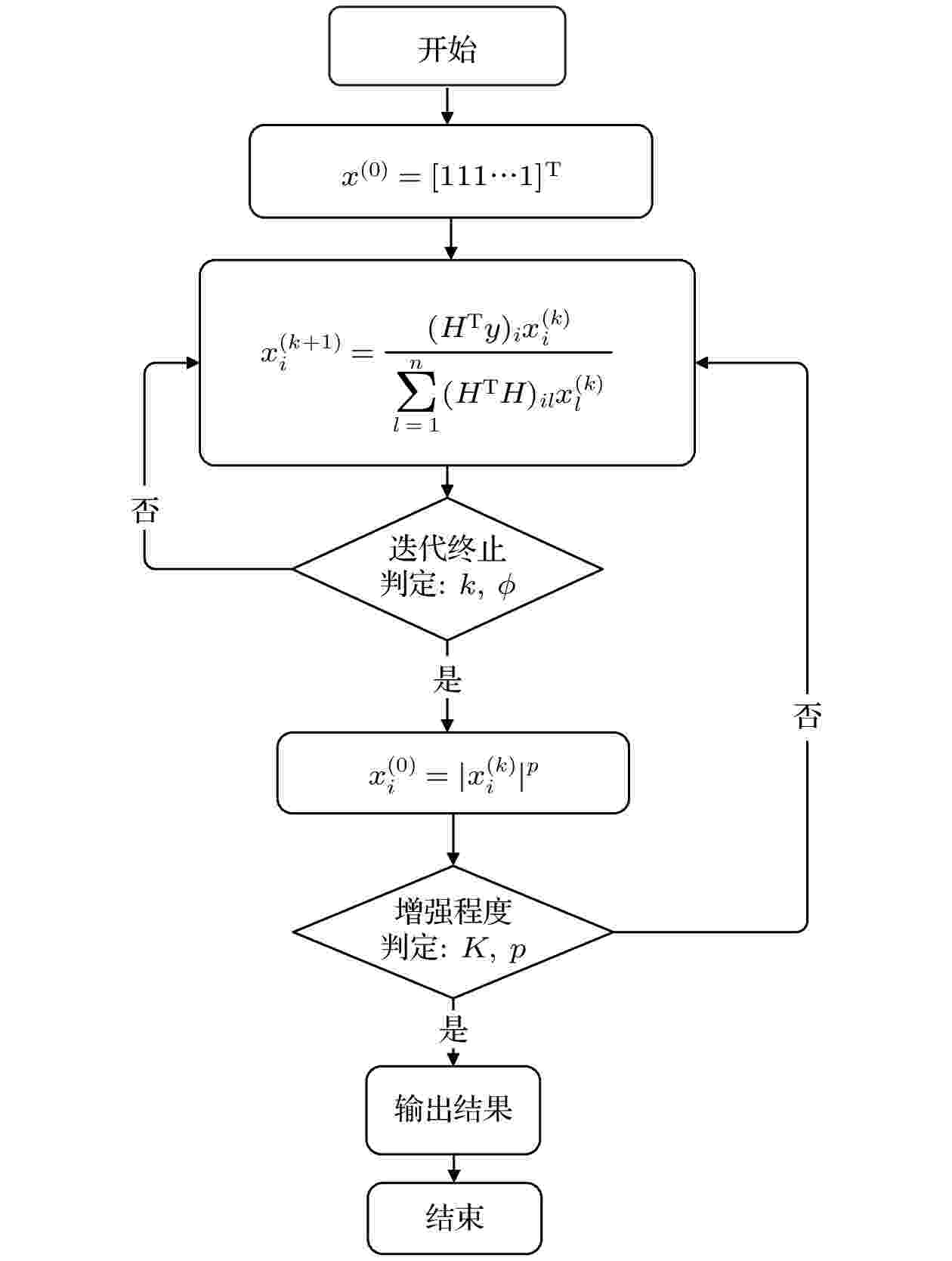
2022, 71 (10): 102901.
doi:10.7498/aps.71.20212429
Abstract +
To obtain the characteristic information of unknown radionuclides by analyzing the γ-energy spectrum of a low-resolution detector, and to improve the accuracy and validity of the analysis of overlapping and weak peaks in the γ-energy spectrum, in this paper we analyze the γ-energy spectrum of NaI(Tl) detectors based on the Boosted-Gold algorithm. A simulation model of NaI(TI) detector is established by using MCNPX, and a detector response matrix with dimension 201 × 200 is obtained. The γ-energy spectrum unfolding program is developed based on the Boosted-Gold algorithm. The detector response spectra of the γ radioactive sources22Na,133Ba, and152Eu are measured. Three groups of low-resolution γ spectra are constructed with different γ-ray energy, different energy differences (
$ \Delta E $
) and different relative intensities by simulation. Combining the response matrix and the unfolding procedures, the measured and simulated γ energy spectra are unfolded. The unfolding results are analyzed with the nuclide standard characteristics information from the IAEA database. The results show that the maximum unfolding error of the characteristic energy of the measured γ-energy spectrum is 2.17% (0.276 MeV for133Ba source) by the Boosted-Gold algorithm, and the maximum deviation between the unfolded intensity and the standard intensity is 0.197 (1.408 MeV for152Eu source). For the simulated γ energy spectrum, the characteristic energy of nuclide can be accurately analyzed, and the deviation between unfolded intensity and standard intensity maintains 0.01. When the enhancement factorp≤ 14, the Boosted-Gold algorithm is beneficial to the quantitative analysis of γ-radionuclides. For the relative intensity of γ-rays greater than 10%, this algorithm has better analysis accuracy.
ATOMIC AND MOLECULAR PHYSICS
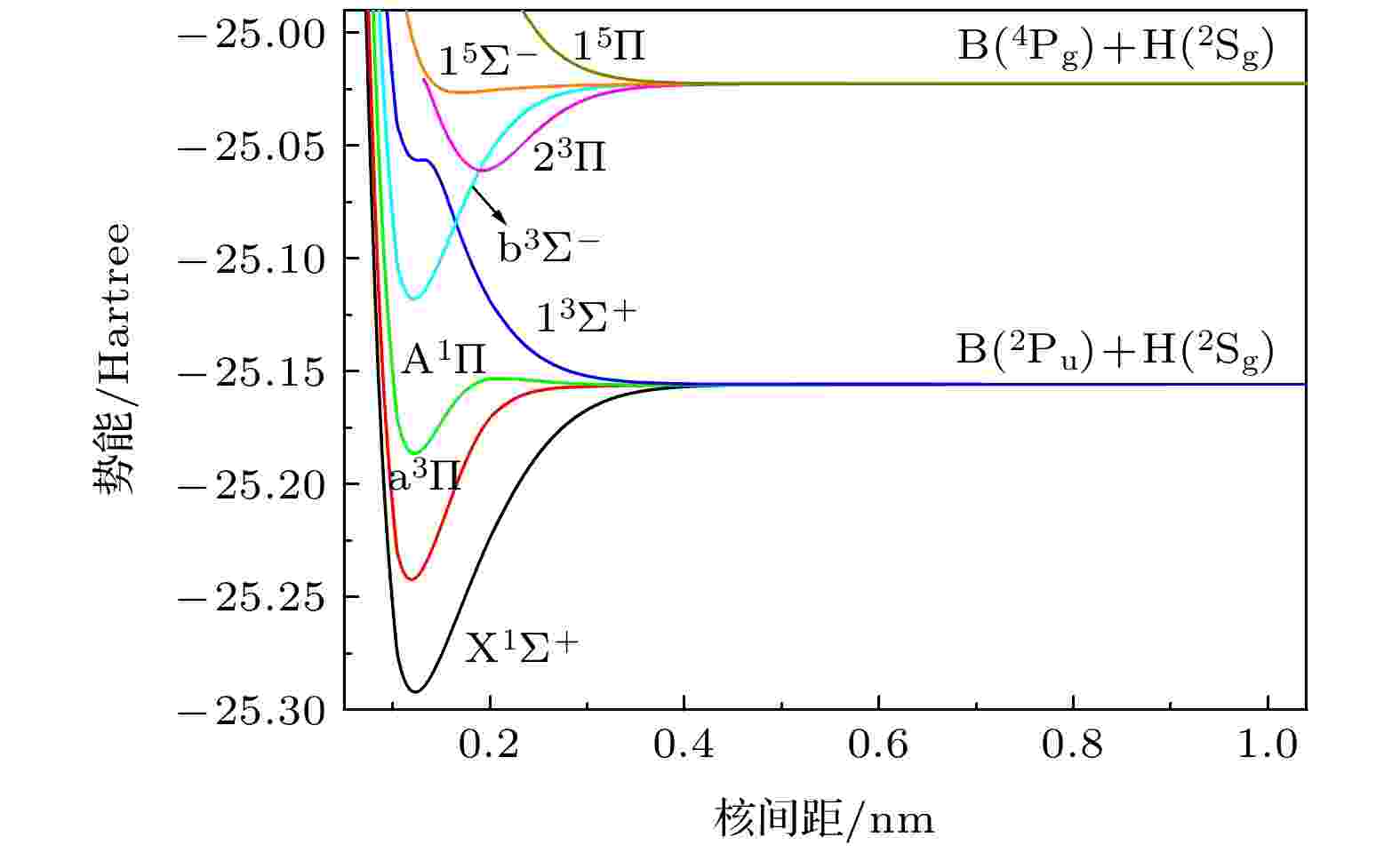
2022, 71 (10): 103101.
doi:10.7498/aps.71.20220038
Abstract +
In this work, the potential energy curves of eight low electronic states (X1Σ+, a3Π, A1Π, b3Σ-, 23Π, 13Σ+, 15Σ-, and 15Π) and twenty-three Ω states of BH molecule, and the transition dipole moments among the
$ {\text{X}}{}^{\text{1}}{\Sigma}_{{{\text{0}}^ + }}^ + $
,
$ {{\text{a}}^{\text{3}}}{\Pi_{{{\text{0}}^ + }}} $
, a3Π1, a3Π2, and A1Π1states are calculated by using the internally contracted multireference configuration interaction (icMRCI) method. In order to obtain the accurate potential energy curve, the errors caused by single and double electron excitation, core-valence correlation effects, relativistic effects and basis set truncation are corrected. The spectral and transition data of BH molecule are in good agreement with the available theoretical and experimental data. The calculation results show that the A1Π1(υ′= 0-2,J′= 1, +) →
$ {\text{X}}{}^{\text{1}}{\Sigma}_{{{\text{0}}^ + }}^ + $
(υ′′= 0-2,J′′= 1, –) transition has large EinsteinA-coefficient, weighted absorption oscillator strength, and highly diagonal vibrational branching ratioRυ′υ′′, and the excited state A1Π1(υ′= 0, 1) have short spontaneous radiation lifetimes. Moreover, the effects of
$ {{\text{a}}^{\text{3}}}{\Pi_{{{\text{0}}^ + }}} $
and a3Π1states on A1Π1(υ′= 0) ↔
$ {\text{X}}{}^{\text{1}}{\Sigma}_{{{\text{0}}^ + }}^ + $
(υ′′= 0) cycle transition can be ignored. Therefore, according to the A1Π1(υ′= 0-1,J′= 1, +) ↔
$ {\text{X}}{}^{\text{1}}{\Sigma}_{{{\text{0}}^ + }}^ + $
(υ′′= 0-3,J′′ = 1, –) cycle transition, we propose to apply one main cooling laser (λ00= 432.45 nm) and two repumping lasers (λ10= 479.67 nm andλ21= 481.40 nm) to laser cooling BH molecules, and evaluation of the cooling effect.
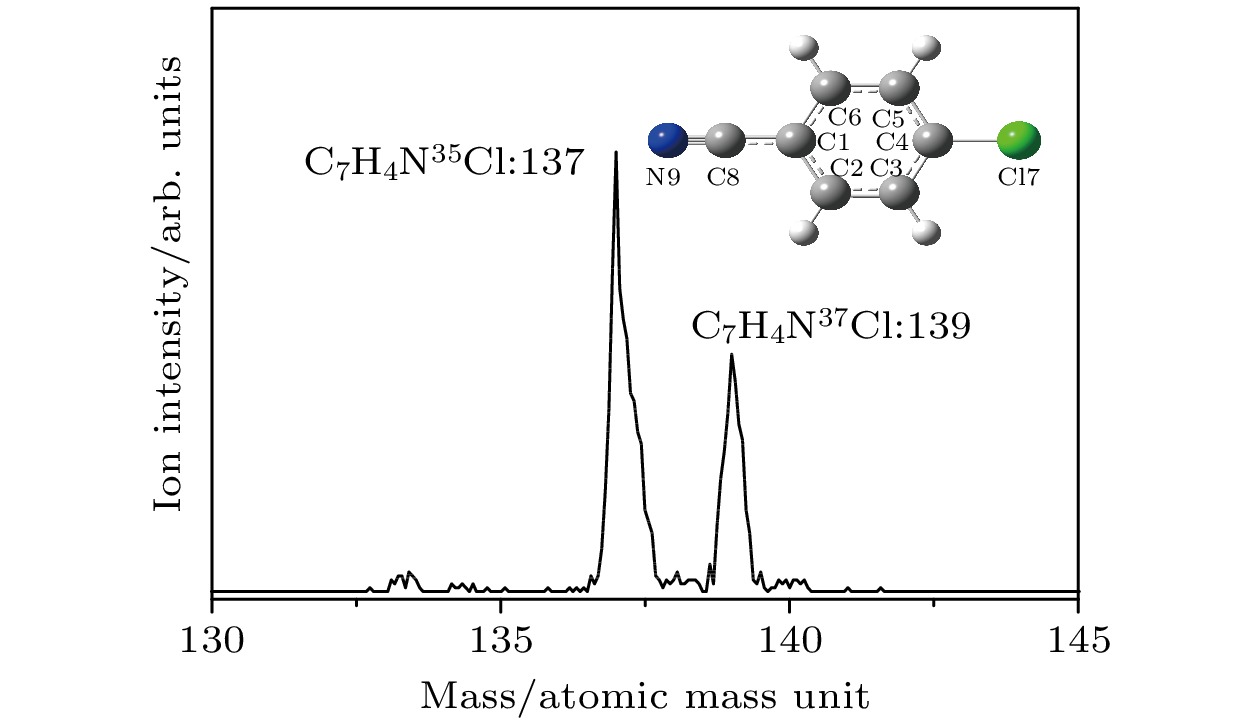
2022, 71 (10): 103301.
doi:10.7498/aps.71.20220089
Abstract +
The vibrational features ofp-chlorobenzonitrile in its first electronically excited state S1and cationic ground state D0have been investigated by two-color resonance enhanced two-photon ionization and mass analyzed threshold ionization spectroscopy. The excitation energy of S1← S0and the ionization energy of35Cl and37Cl isotopomers ofp-chlorobenzonitrile are determined to be 35818 ± 2, and 76846 ± 5 cm–1, respectively. These two isotopomers have similar vibrational features. Most of the active vibrations in the S1and D0states are related to the motions of the in-plane ring deformation. The stable structures and vibrational frequencies ofp-chlorobenzonitrile are also calculated by the B3LYP/aug-cc-pVDZ method for the S0and D0states, and TD-B3LYP/aug-cc-pVDZ method for the S1state. The changes in the molecular geometry are discussed in the S1← S0photoexcitation process and the D0← S1photoionization process. The comparisons between the transition energy ofp-chlorophenol,p-chloroaniline,p-chloroanisole, andp-chlorobenzonitrile with those of phenol, anisole, aniline, and benzonitrile provide an insight into the substitution effect of Cl atom.

EDITOR'S SUGGESTION
2022, 71 (10): 103601.
doi:10.7498/aps.71.20220123
Abstract +
ELECTROMAGNETISM, OPTICS, ACOUSTICS, HEAT TRANSFER, CLASSICAL MECHANICS, AND FLUID DYNAMICS
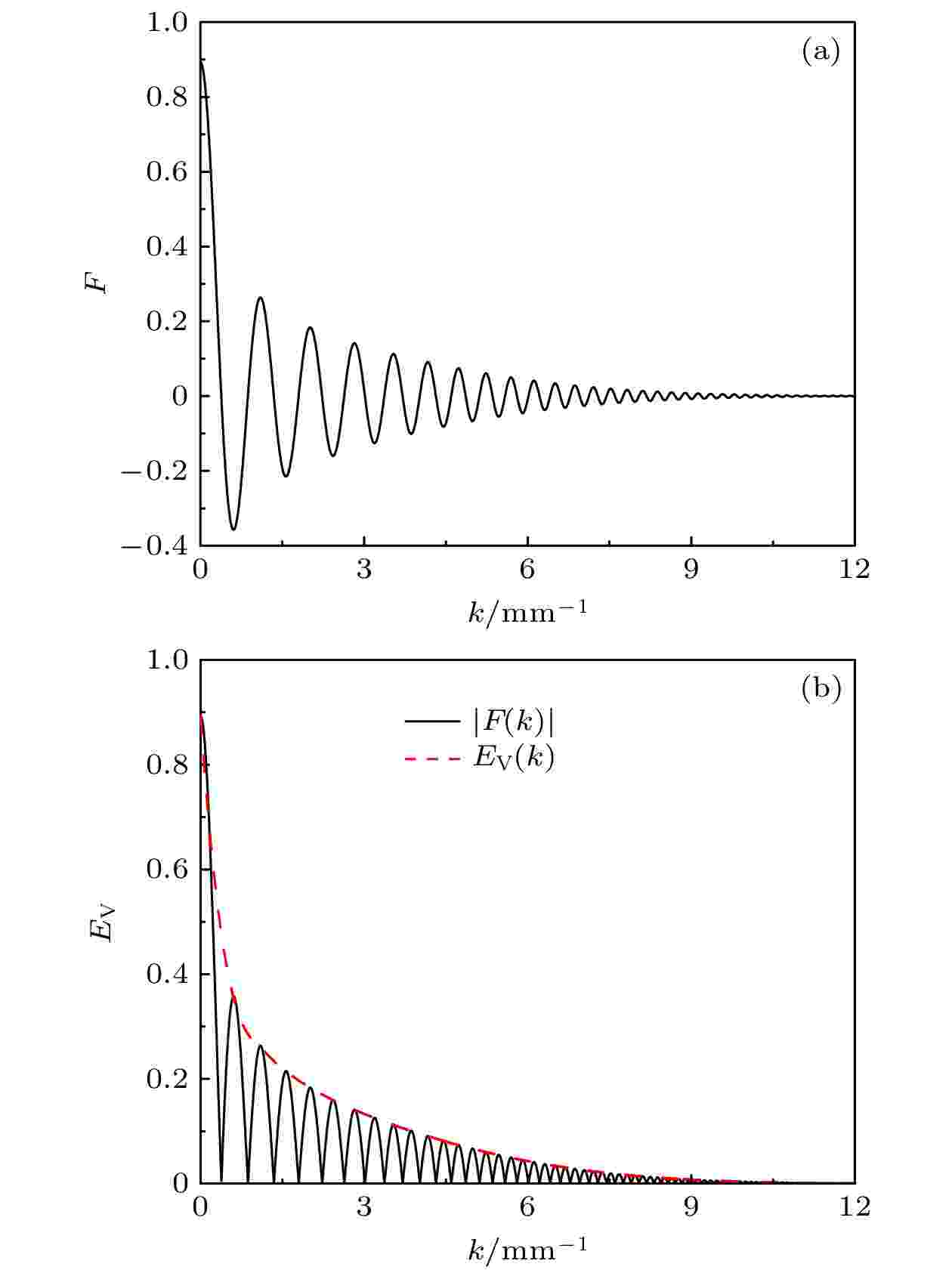
EDITOR'S SUGGESTION
2022, 71 (10): 104201.
doi:10.7498/aps.71.20220019
Abstract +
An asymmetric envelope function for modulating the spectrum of circular Airy beam is proposed in this work. The propagation properties of the modified circular Airy beam are investigated in both theory and experiment. The three parameters of the asymmetric hyperbolic secant function can be used to adjust the ratio of the high frequency components to the low frequency components in Fourier space, and thus tuning the propagation properties of this modified circular Airy beam. The results demonstrate that the focal position is affected mainly by the high frequency components. The maximum focal intensity will not be enhanced continuously by increasing the proportion of the high frequency components. It depends on the ratio of the high frequency components to the low frequency components when the center frequency is determined. Therefore, using an asymmetric envelope in Fourier space is much more reasonable than using the high pass filtering or symmetric Gaussian envelope. The FWHM decreases significantly with the increase of center frequency. When the parameters are chosen appropriately, the size of focal spot will be reduced significantly, the maximum focal intensity, especially the abruptly autofocusing property will be enhanced greatly and the focal position can remain almost the same as the focal position of the common circular Airy beam. The maximum focal intensity of the proposed beam is 3.4 times that of the common circular Airy beam and the abruptly autofocusing property of the proposed beam is much better than that of the beam using the symmetric Gaussian envelope. The phase-only encoding method in Fourier space is used to generate the proposed beam in experiment. The experimental results are in reasonable agreement with the simulation results. It indicates that the modified beam can be generated conveniently by using the same method as that used to generate the common circular Airy beam.
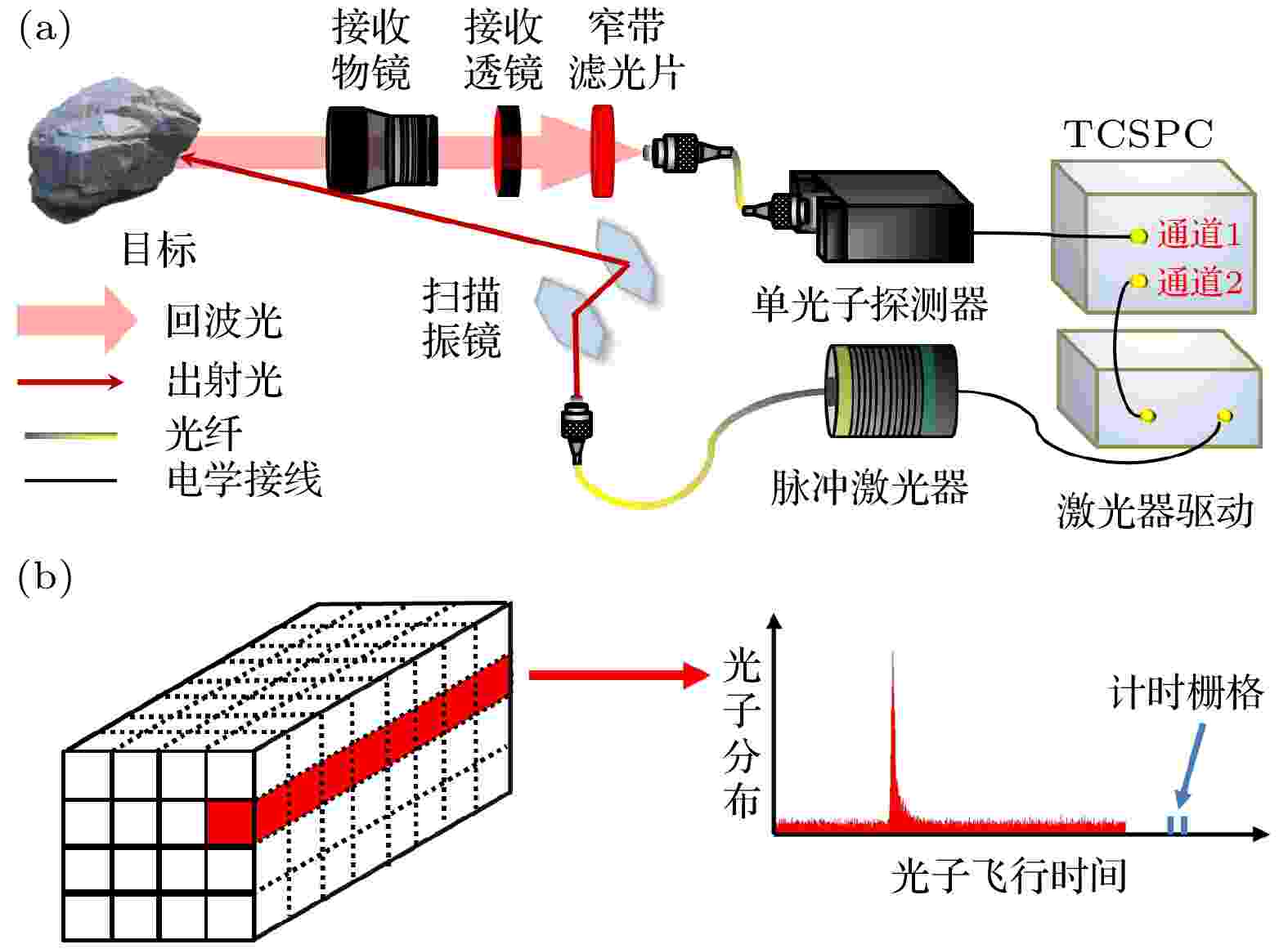
2022, 71 (10): 104202.
doi:10.7498/aps.71.20211697
Abstract +
Single photon LiDAR is considered as one of the most important tools in acquiring target information with high accuracy under extreme imaging conditions, as it offers single photon sensitivity and picosecond timing resolution. However, such technique sense the scene with the photons reflected by the target, thus resulting in severe degradation of image in presence of strong noise. Range gating with high-speed electronics is an effective way to suppress the noise, unfortunately, such technique suffers from manually selecting the parameters and limited gating width. This paper presents a target information extracting and image restoration method under large observation window, which first obtain the depth distribution of the target and extract the information within the range by analyzing the model of signal and noise, then further improve the image quality by adopting advanced image restoration algorithm and henceforth shows better results than those denoising method that purely relying on hardware. In the experiment, photon-per-pixel (PPP) was as low as 3.020 and signal-to-background ratio (SBR) was as low as 0.106, the proposed method is able to improve SBR with a factor of 19.330. Compared to classical algorithm named cross correlation, the reconstruction signal to noise ratio (RSNR) increased 33.520dB by further cooperating with advanced image restoration algorithm, thus improved the ability of sensing accurate target information under extreme cases.
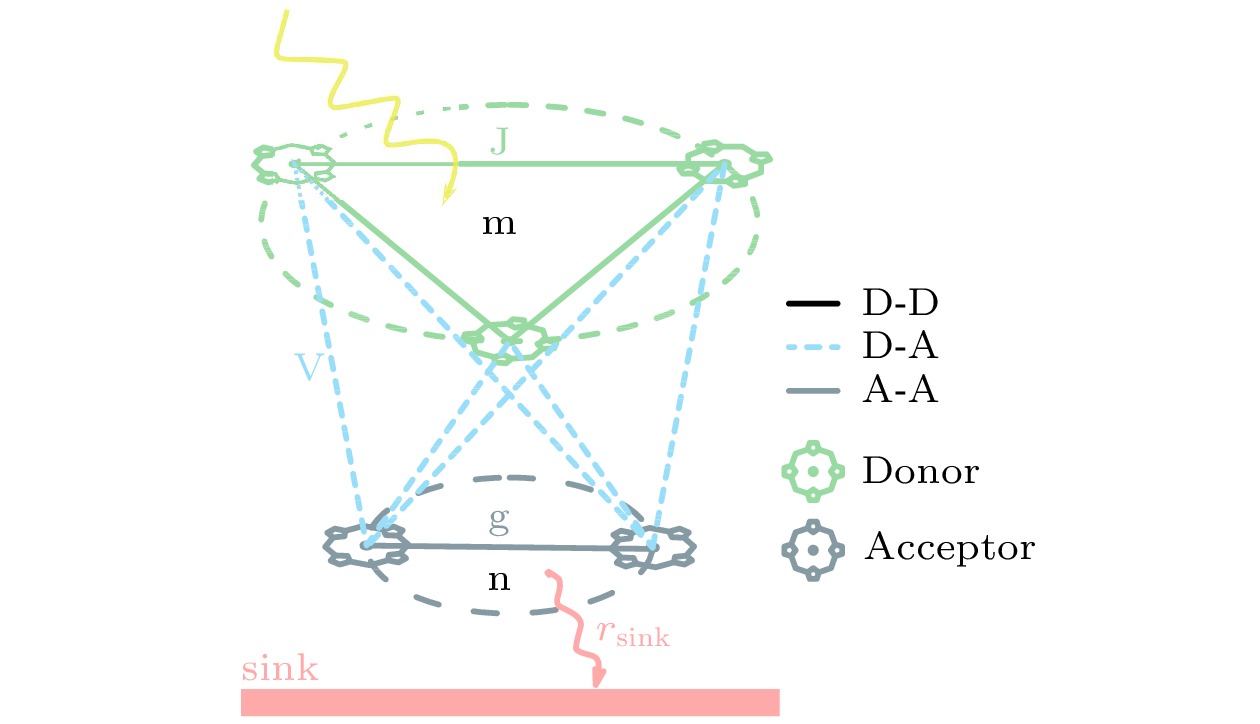
2022, 71 (10): 104203.
doi:10.7498/aps.71.20211960
Abstract +
Most studies on quantum effects in the process of excitation energy transfer in photosynthesis system are based on the single-excitation initial state hypothesis, which can well describe the initial state of some photosynthesis systems that people are concerned about. But for natural and artificial photosynthesis systems that do not meet the above hypothesis, the excitation process has a non-negligible impact on the system dynamics. Based on a multi-pigments model excited by Gaussian pulse, the effects of the excitation pulse width and the excitation interval on system dynamics and excitation energy transfer efficiency are studied. First, the kinetic equations for the overall evolution of the donor system and the acceptor system that can theoretically contain any number of pigments are derived. Afterwards, the relationship between the excitation energy transfer efficiency and the related parameters of the system, as well as the optimal range of the corresponding parameters are demonstrated by numerical simulation. It is found that under the condition of donor pigments being excited by a single Gaussian pulse, there exists optimal pulse width, and the optimal range of the pigment molecule numbers, the coupling strength as well as the dephasing rate can be modulated by the pulse width. The mechanism of the above modulation is also analyzed and presented. Under the condition of donor pigments being excited by two Gaussian pulses sequentially, there exists an optimal combination of pulse width and pulse interval. The kinetic equations obtained in this paper can be extended to other forms of excitation pulses. The numerical results and the related optimal design principles obtained have reference significance for the optimal design of artificial photosynthesis systems under different light conditions.

EDITOR'S SUGGESTION
2022, 71 (10): 104204.
doi:10.7498/aps.71.20212282
Abstract +
Nonlinear optical microscopy technique has unique advantages in tissue imaging, such as enhanced contrast, high resolution, and label-free deep optical sectioning capabilities. Nonlinear optical microscopy also has multiple imaging modalities, corresponding to various components in biological tissues. Unfortunately, its wide applications are hindered due to the lack of broadly tunable femtosecond sources designed for driving multimodalities simultaneously. To solve this challenge, we propose a new wavelength conversion approach—self-phase modulation (SPM) enabled spectral selection, dubbed as SESS. The SESS employs SPM to broaden the input spectrum in a short fiber, and the broadened spectrum features well-isolated spectral lobes. Using the suitable optical filters to select the outermost spectral lobes produces nearly transform-limited femtosecond pulses. In this work, we demonstrate a fiber-optic SESS source for multimodal nonlinear optical microscopy. Based on a 43-MHz Yb-fiber laser, this SESS source can emit 990-nm, 84-fs pulses with >5-nJ energy and ~84-fs pulse duration; it can also produce 1110-nm, 48-fs pulses with 15-nJ energy. The 990-nm pulses are used to drive two-photon excitation fluorescence of many important fluorophores and second-harmonic generation microscopy, which, combined with image splicing technology, enables us to obtain a large field of view image of the gastric tissue. We also employ the 1110-nm pulses to drive simultaneous label-free autofluorescence-multiharmonic microscopy for multimodal imaging of gastric tissue. Two-photon excitation fluorescence, three-photon excitation fluorescence, second-harmonic generation and third-harmonic generation signals of gastric tissue are simultaneously excited efficiently. Such a multimodal nonlinear optical microscopy driven by SESS sources becomes a powerful tool in biomedical imaging.
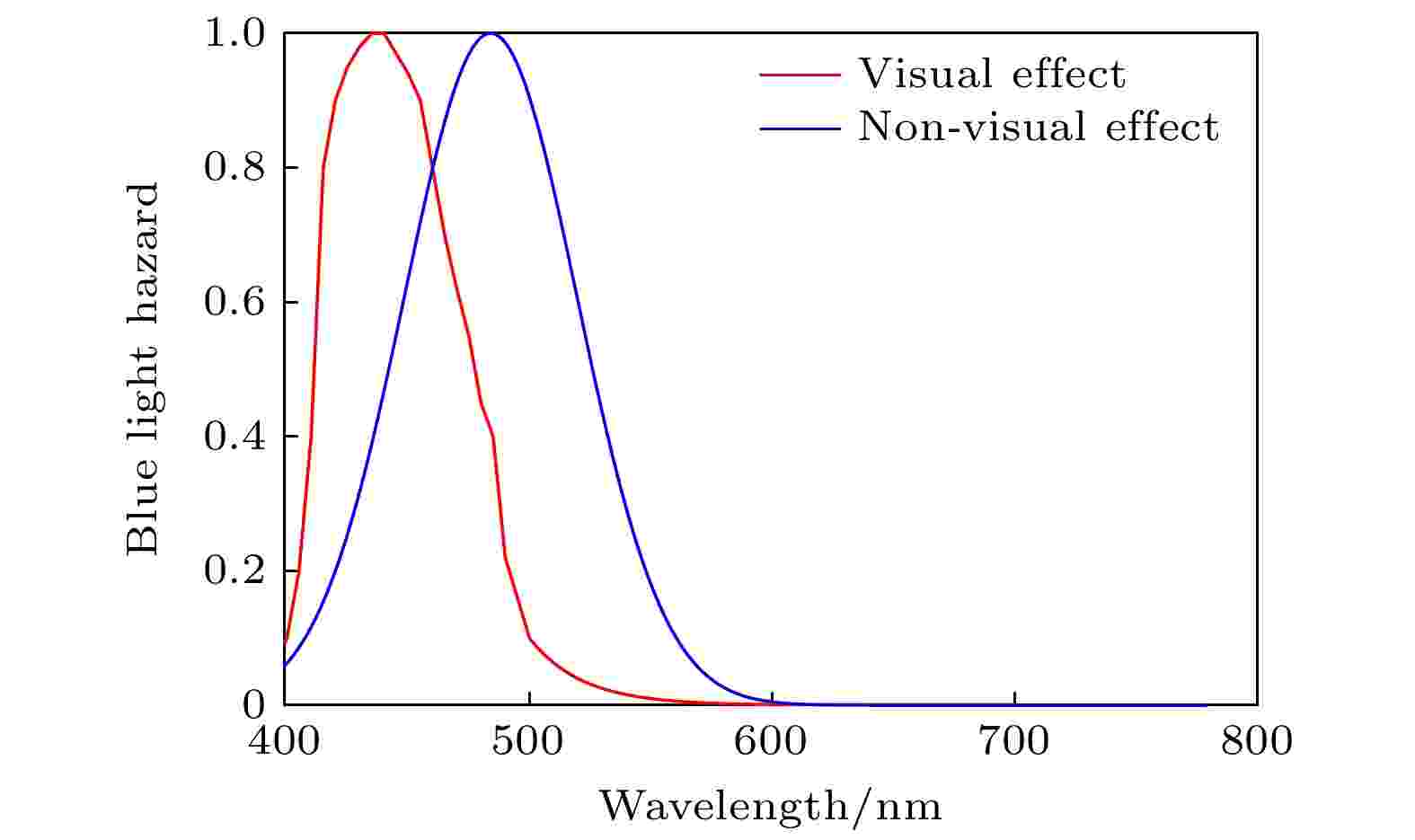
2022, 71 (10): 104205.
doi:10.7498/aps.71.20212356
Abstract +
Display devices based on new generation of light source have become the mainstream of the market due to the advantages of large color gamut, high brightness, and high resolution. Blue light, as one of the three primary colors, is an indispensable part of the display system. Its parameters, such as wavelength, spectral width, brightness affect the color gamut of the display system from different aspects. Strong blue light can damage the retinal cells of the human eye and affect the biological rhythm. Therefore, it is needed to consider how to reduce the blue light hazard when designing the display system. Display devices, represented by mobile phones and TV are an important part for human-computer interaction. In order to reduce the blue light hazard, anti-blue hazard mode is usually used and this mode will affect the color gamut of display device. To measure the color gamut and blue light hazards in a display system with the blue light protection mode is necessary. We propose a theory of measuring the characteristic points of display devices to obtain the stereoscopic color gamut. Several mainstream mobile phones currently on the market are used as experimental samples to measure the stereoscopic color gamut and blue light hazard value. Based on the results, we propose the measurement standard of the conversion ratio between the color gamut and the blue light hazard to evaluate the quality of the anti-blue hazard mode.
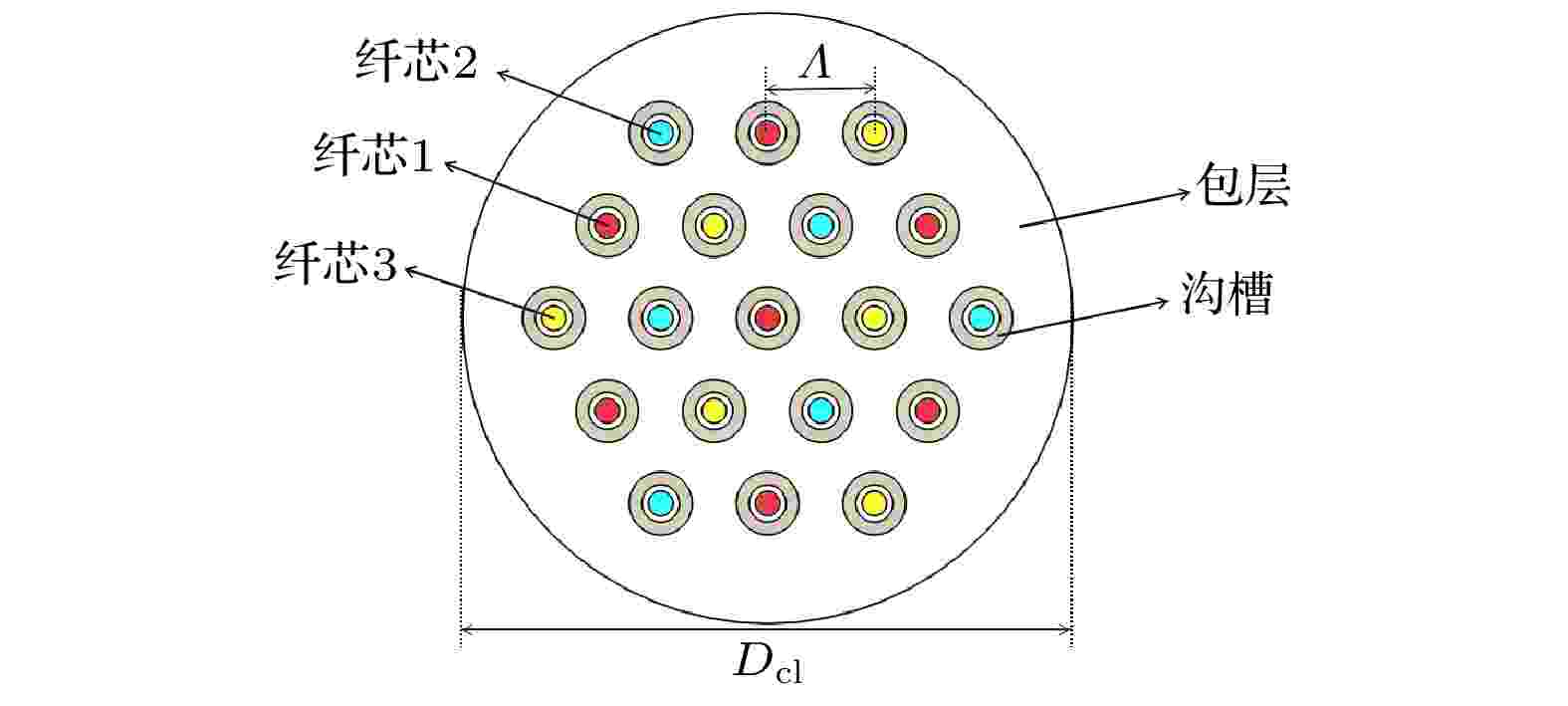
2022, 71 (10): 104206.
doi:10.7498/aps.71.20212221
Abstract +
The rapid growth of the demand for optical communication capacity promotes optical fiber communication technology. As a method to break through the capacity limitation of conventional single-mode fiber, multi-core fiber based on space division multiplexing technology has attracted extensive attention. In order to respond to the capacity of traditional single-mode fiber positively, we design a scheme of single-mode multi-core fiber combining the arrangement of heterogeneous fiber cores with secondary structure of low refractive index trench. The scheme consists of nineteen fiber cores arranged in a hexagonal closed-packed structure. Heterogeneous trench-assisted multi-core fiber (Hetero-TA-MCF) has low inter-core crosstalk and excellent anti-bending performance. Compared with conventional single-mode fiber, the Hetero-TA-MCF has the large transmission capacity and average effective area of each core of about 80 μm2. The transmission capacity of 19 cores is equivalent to the sum of the transmission capacities of 19 single-core single-mode fibers. We use COMSOL Multiphysics to simulate the fiber structure, finding the parameters that affect the properties of the fiber, selecting parameters and structures for optimal performance. Then we calculate the transmission characteristics by the finite element method,and the results of substantive simulating compute are as follows. The Hetero-TA-MCF achieves a low inter-core crosstalk (XT) of about –39 dB/100 km so that each core can be transmitted as a separate channe. It meets the standard of multi-core fiber long distance transmission. The XT of the heterogeneous 19-core single-mode fiber is suitable for multi-core fiber long distance transmission standards. The bending loss of the outermost fiber core is –7.7×10–5dB/m when the bending radius is 10 cm, which reflects the low loss characteristics of the structure. The nonlinear coefficients of three kinds of core are 1.28 W–1·km–1, 1.31 W–1·km–1, and 1.30 W–1·km–1respectively, reducing the nonlinear effect of optical fiber effectively; the dispersions of three kinds of cores are less than 24 ps/(nm·km). In addition, the steady single-mode transmission is achieved inC+Lband. Compared with traditional single-mode fiber and single-trench homogeneous fiber, the proposed fiber in this work has low crosstalk, good bending resistance and large mode field area, which is suitable for long distance and large capacity transmission in space division multiplexing system.

Temperature field monitoring of lithium battery pack based on double-clad fiber Bragg grating sensor
2022, 71 (10): 104207.
doi:10.7498/aps.71.20212302
Abstract +
Lithium-ion battery is one of the most versatile energy storage technologies today, and the reliability and safety of lithium battery have always been the target pursued by the industry all the time, so it is particularly important to accurately monitor the safety status of the battery. Actually, the ultimate cause of all lithium battery safety problems lies in the thermal runaway inside the lithium battery. In order to overcome the current problems of temperature measurement systems, such as low accuracy and insufficient stability for long-time operation at relatively high temperature, a temperature monitoring system of quasi-distributed lithium battery based on double clad Fiber Bragg Grating (FBG) is proposed in this work. After the monitoring of the temperature field and bulge deformation of 18650 lithium battery pack by building 4 channels and 16 double clad FBG points to monitor the temperature field and bulge deformation of 18650 lithium battery pack, the results show that the points with abnormal temperature rise caused by short circuit and other problems can be accurately determined under the temperature of 0–450 ℃, with the corresponding temperature sensitivity of 10 pm/℃, and the resolution of 0.1 ℃. The double clad FBG attached to the surface of the lithium battery shell can also monitor the bulge deformation on the surface of the battery shell, and its longitudinal pressure modification sensitivity is up to 142 pm/N. The temperature field monitoring system of quasi-distributed lithium battery pack based on double clad FBG in this paper can not only ensure high-precision temperature and deformation measurement, but also have good stability and anti-interference ability, which shows that the research work in this paper is expected to provide a reliable theoretical and experimental basis for the safety monitoring and use of lithium battery pack.
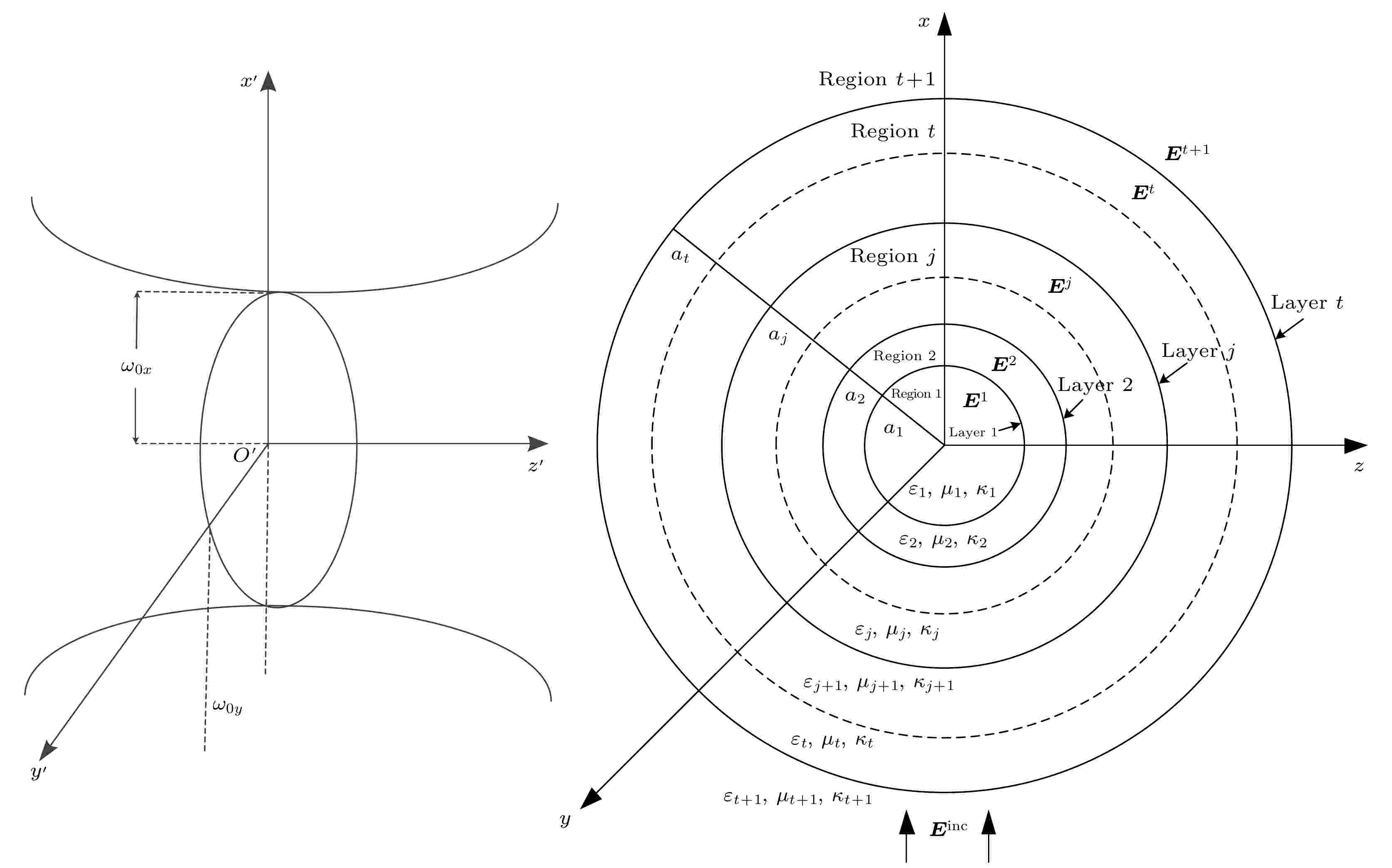
2022, 71 (10): 104208.
doi:10.7498/aps.71.20212284
Abstract +
Theoretical study on optical trapping of multi-layered chiral sphere has attracted more and more attention for its important applications in many frontier scientific fields such as chemical engineering, biomedicine, optical tweezers, micro/nano lithography etc. In order to trap and manipulate chiral multi-layered particles efficiently, the present paper aims at developing the theoretical research of trapping force (TF) exerted on a multi-layered chiral sphere induced by laser sheet which might have great potential to improve the light performance in optical trapping as well as capture, suspension, and high-precision delivery of chiral cells. Here, based on the Generalized Lorenz Mie theory and the completeness of spherical vector wave functions (SVWFs), the electromagnetic field of incident laser sheet are expanded in terms of SVWFs. Accordingly, by introducing the beam scattering theory and the conservation law of electromagnetic momentum (EM), the analysis of TF exerted on multi-layered chiral sphere can be analytically expressed in terms of the incident and scattering coefficients. Taking the chiral cell as an example, the TF induced by laser sheet is simulated numerically. Numerical effects of the varying chirality, polarization states, beam waist width, inner material loss and outmost size on the TF induced by laser sheet are analyzed and compared with those by circular Gaussian beam incidence in detail. It is found that the introduction of chirality parameter may reduce the axial TF exerted on chiral multi-layered cell. Thus, it is more difficult to trap and manipulate stratified chiral cells than to trap general isotropic cells. Also it is shown that the TF of chiral cells can be significantly discriminatory in nature, depending upon both the handedness of the interacting particles and the polarization of the incident light. Thus, an appropriately polarized beam should be considered in trapping chiral cells. For chiral multi-layered cells with small loss in the inner layer, when the inner refractive indices are less than the outmost refractive index, the TF of multi-layered chiral cell becomes stronger with the outmost radius decreasing. Conversely, for the inner refractive indices are greater than the outer refractive index, TF becomes weaker as the outmost radius decreases. Besides, compared with the traditional circular Gaussian beam, the strong convergence of elliptical Gaussian beam can be easier to achieve three-dimensional capture of stratified chiral cells, which may provide a recipe to understand the light interaction with more complex chiral cells with the aid of the analytical approach and could be a promising avenue for the design of optical trapping systems.
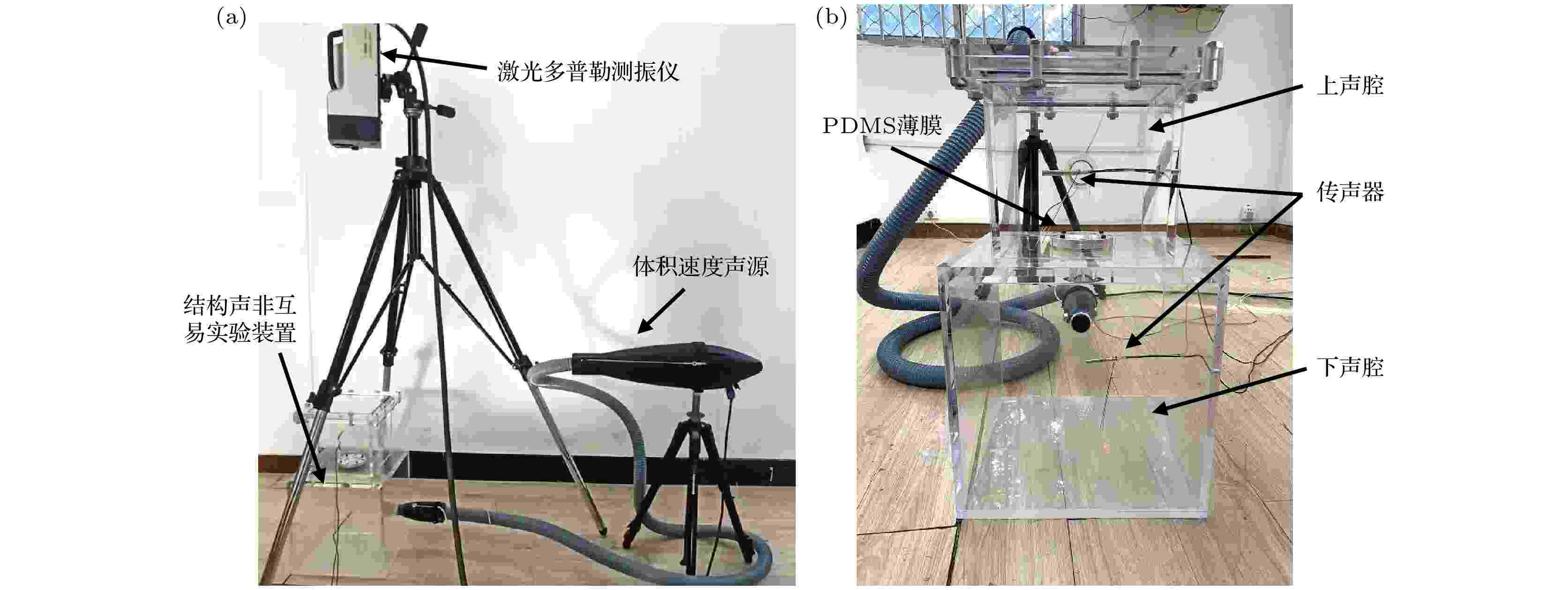
2022, 71 (10): 104301.
doi:10.7498/aps.71.20212181
Abstract +
Mechanisms for the nonreciprocal transmission of acoustic energy and the construction of non-reciprocal vibro-acoustic systems have been subjects of intense research in recent years. An experimental study of acoustic nonreciprocal transmission in an experimental system with a nonlinear membrane and two acoustic cavities of different sizes is reported. The membrane can be simplified into a Duffing oscillator, and the asymmetry of the frequency response function of this oscillator is used to realize the non-reciprocal transmission of acoustic energy. The asymptotic solution of the frequency response function of the nonlinear membrane is obtained by the complexification-averaging method. The theoretical simulation results accord well with the experimental results. The results show that the experimental system has a maximum non-reciprocal quantity of 9.1 times in theory, 4.3 times in the experiment, and the normalized frequency bandwidth of the jump phenomenon region is up to 0.56. The research results reveal the mechanism of non-reciprocal transfer of acoustic energy in the experimental system and demonstrate a new way to realize the asymmetric transfer of acoustic energy in an acoustic system with an air medium.

2022, 71 (10): 104302.
doi:10.7498/aps.71.20212251
Abstract +
The calculation of acoustic radiation force and acoustic radiation torque is an important basis for the precise manipulation of particles. It is difficult to directly apply the partial-wave series expansion method based on the classical acoustic scattering theory to the study of complicated models, while pure numerical methods are not conducive to the parametric analyses of the system. Based on the basic principle of Born approximation, the expressions of acoustic radiation force and torque acting on an arbitrary particle located in the center of a zero-order Bessel standing wave field are derived at low frequencies. On this basis, the numerical simulations are systematically performed by taking spherical, spheroidal and cylindrical particles as examples. The effects of inhomogeneity on the acoustic radiation force and torque are also investigated. The simulation results show that the Born approximation method has a high accuracy in the low frequency range. As the frequency increases and the impedance matching between the particle and the fluid becomes worse, the accuracy of Born approximation will gradually decrease. An acoustic radiation torque caused by asymmetry will be exerted on spheroidal and cylindrical particles obliquely positioned in a zero-order Bessel standing wave field. When the particle size is much smaller than the wavelength, the acoustic radiation force is nearly independent of the particle shape, but this is not the case for acoustic radiation torque. Finally, viscous effect of the surrounding fluid is introduced and the expression of acoustic radiation force is corrected accordingly. The study is expected to provide a theoretical guide for the precise manipulation of small particles using standing wave acoustic tweezers in biomedicine and material sciences.

2022, 71 (10): 104303.
doi:10.7498/aps.71.20211825
Abstract +
Precise measurement of blood flow is of vital importance in studying the formation of thrombus and atherosclerotic plaque. However, conventional color Doppler methods are limited to obtaining the velocity component along the ultrasound beam and have poor accuracy. Several Doppler flow imaging methods based on the plane wave emission can estimate the blood velocity vectors and visualize hemodynamic parameters, which provide more detailed blood flow information and effectively improve the capability of clinical diagnosis treatment. Considering the low accuracy of the Doppler flow methods for measuring velocity in complex flow fields, an optimization technique is used to improve the imaging quality and the accuracy of velocity estimation. In this study we propose a modified vector Doppler method through combining multi-angle compound technique, to reconstruct blood velocity vectors of carotid bifurcations obtained from 3D printing. Since the multi-angle compound technology can effectively improve the quality of imaging, this technology is applied to Doppler imaging to achieve high-accuracy velocity estimation. It can significantly reduce the velocity estimation errors. Comparing the velocity estimation accuracy of different angle compound numbers (n= 1, 3, 5, and 7) in the simulation, it is found that the accuracy of velocity estimation increases with angle compound increasing. Beside, the 5-angle compound method is more robust for velocity estimation and can obtain higher frames. The experiments were carried out using a programmable ultrasonic array system and a high-frequency linear array transducer L12-5c with a central frequency of 8.125 MHz. The sample rate is set to be 31.25 MHz. The imaging results of carotid bifurcation also show that the vector Doppler based on 5-angle compound can obtain a clear image of intravascular vector flow, which is beneficial to the identifying of complex flow state, and realize intravascular dynamic imaging. Especially, it can capture the vortex phenomenon in the blood stream. The quantitative results indicate that this method significantly reduces the error between the flow calculation results and the reference results, making the estimation results more accurate. In conclusion, the vector Doppler method based on multi-angle compound has the good performance of visualizing complex blood flow and calculating hemodynamic parameters. It also provides the reference for the diagnosis of cardiovascular disease and the research of flow imaging methods.
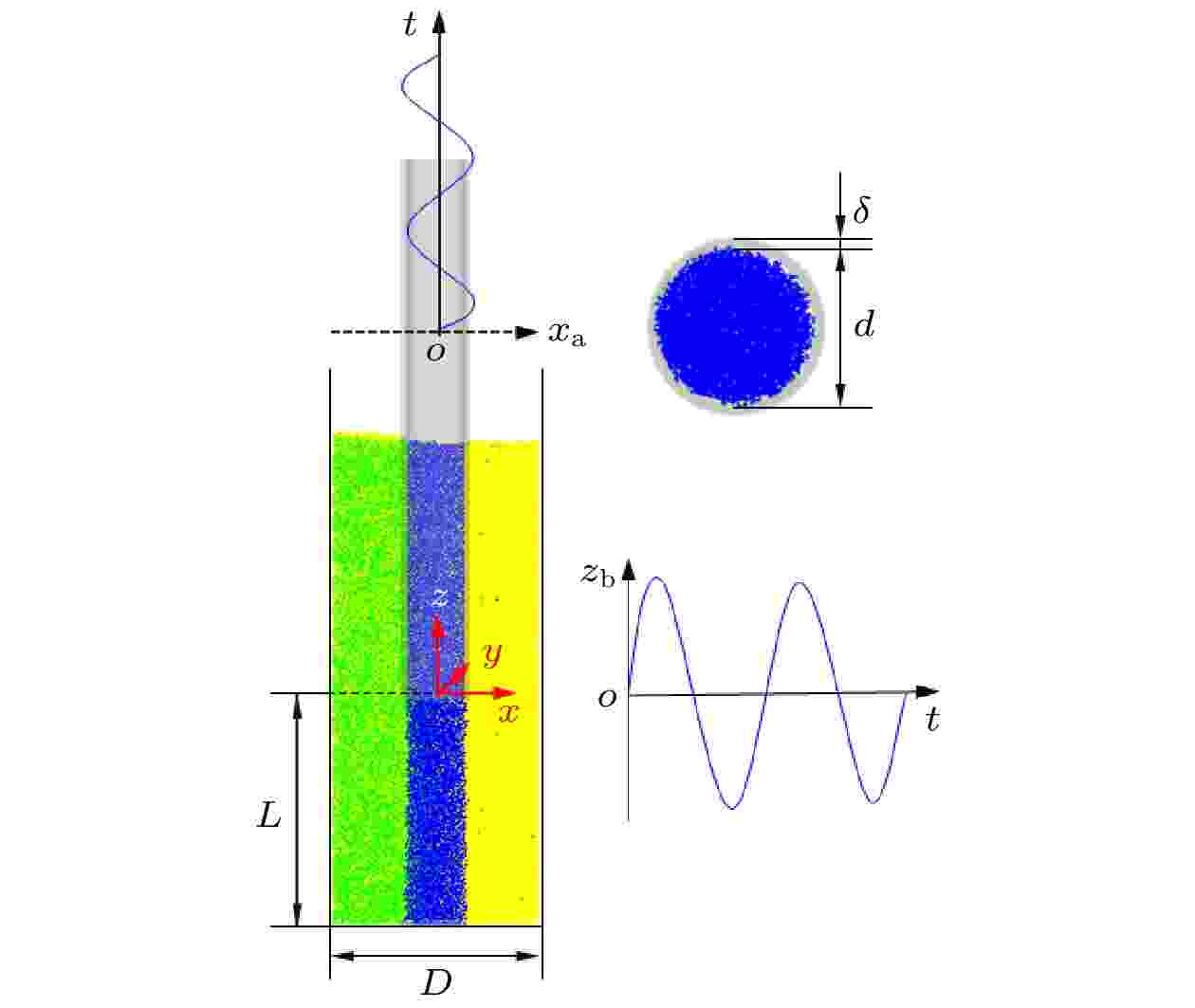
2022, 71 (10): 104501.
doi:10.7498/aps.71.20212333
Abstract +
The phenomenon of granular capillary rising under vertical vibration provides a novel technical route for hoisting, transporting and collecting granular materials. However, there are still obvious deficiencies in the existing studies of the granular capillary rising behavior, especially the intensive investigation on the effects of gravitational acceleration, horizontal vibration component and particle size distribution are still lacking. To address these problems, the discrete element method is used to numerically simulate the granular capillary rising phenomenon under different operating conditions. The final capillary rising height and average capillary rising velocity of the granular matter are computed and analyzed based on the numerical simulations. The results show that the granular capillarity can also occur under low gravity conditions, and that the final capillary rising height and the average capillary rising velocity first increase and then decrease with the gravitational acceleration. It is also found that the final capillary rising height is insensitive to the variation of horizontal vibrational component, whereas the average capillary rising velocity increases with the augmentation of horizontal vibrational component. Compared with the mono-sized particles, the particles with the same mean size but having a Gaussian size distribution exhibit a maximal capillary rising height at a larger critical tube diameter. Meanwhile, the average capillary rising velocity of the particles having a Gaussian size distribution is faster in the tube diameter range where the granular capillary dynamics for both size distributions is dominated by the jamming effect.

2022, 71 (10): 104701.
doi:10.7498/aps.71.20212361
Abstract +
The development of hydrodynamics metamaterials and transformation hydrodynamics has enriched the methods of fluid flow control. In the proposed study, coupling flow rotation and amplification functions, hydrodynamic rotating concentrators with tensorized viscosity are designed based on transformation hydrodynamics. Through numerical simulations, we have demonstrated that the rotating concentrators can simultaneously magnify and rotate the velocity in creeping flows. In the central area of the rotating concentrators, the fluid velocity is amplified, exhibiting the venturi effect; in the external area of the rotating concentrators, the flow state is not interfered with due to the presence of the rotating concentrators, maintaining the original flow state. Additionally, we discover and explain the mechanisms of the rotational hysteresis phenomena that are caused by the nonreciprocity of spatial coordinate transformations. The proposed studies 1) extend and optimize the traditional flow concentrators, 2) raise new approaches for applications related to Venturi effects, and 3) shed light on the design of nonreciprocal coordinate transformations for metamaterials.
PHYSICS OF GASES, PLASMAS, AND ELECTRIC DISCHARGES
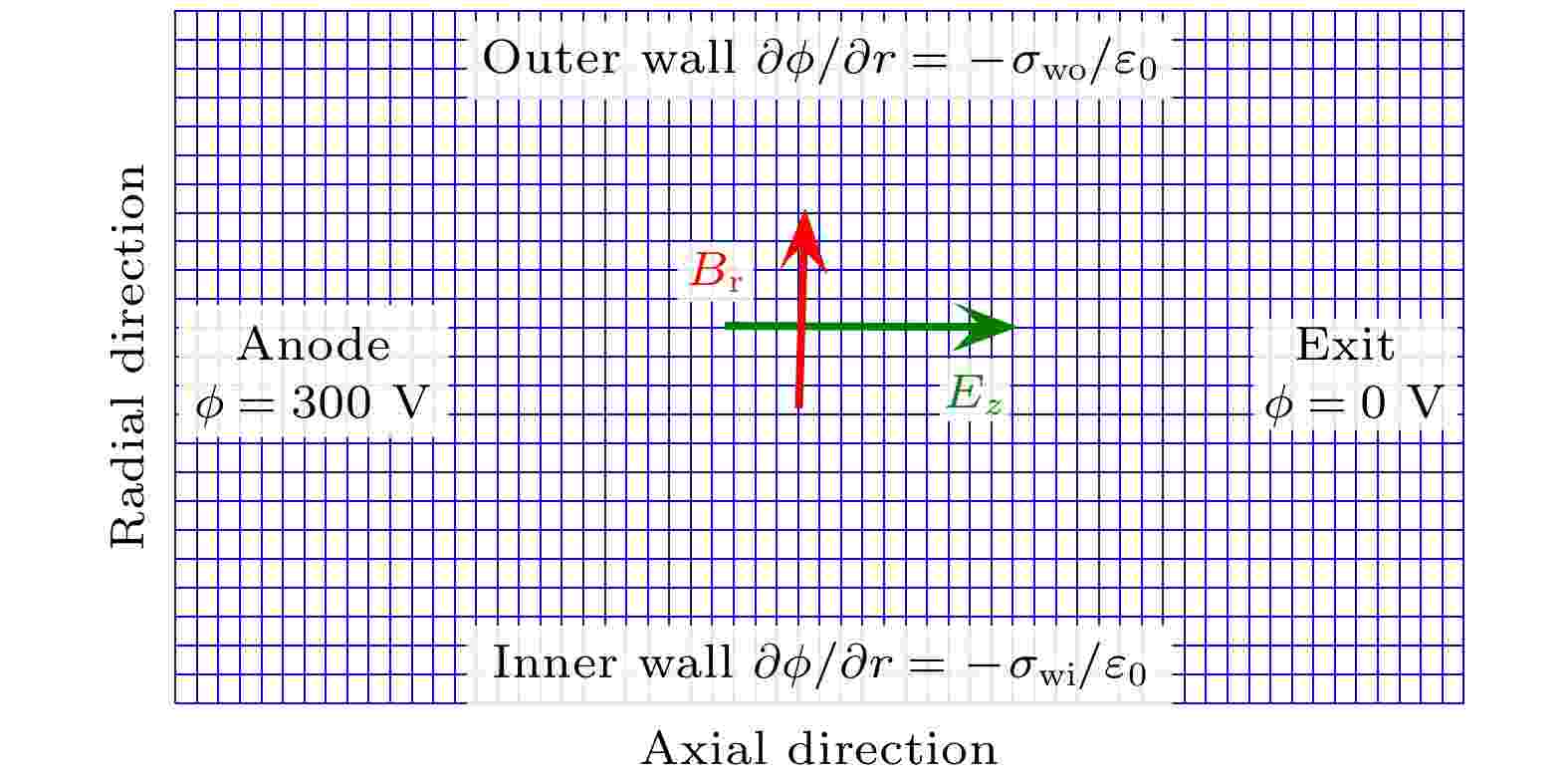
2022, 71 (10): 105201.
doi:10.7498/aps.71.20212386
Abstract +
The Hall-effect thruster has wide applications for commercial aerospace because of the high thrust density and simple structure. In order to further improve the performance of low-power Hall thruster and to solve the problem that the performance of low-power Hall thruster for low-orbit satellites is limited by the input power and maximum magnetic field intensity, the influence of radial magnetic field distribution in the discharge channel on the performance of the thruster is studied by numerical simulation and theoretical analysis in this work through changing the radial magnetic gradient on condition that the axial magnetic profile and the magnetic strength remain unchanged. The results show that the potential of the acceleration zone decreases with the increase of radial distance when the discharge parameters, propellant flow rate and axial magnetic field are unchanged. Therefore, the greater the radial magnetic field gradient near the inner wall of the thruster discharge channel, the greater the kinetic energy of the ions drifting along the axial direction to the thruster outlet, , and the greater the thrust of thruster. The research results of this work provide theoretical support for the magnetic field design and performance optimization of hall thrusters.
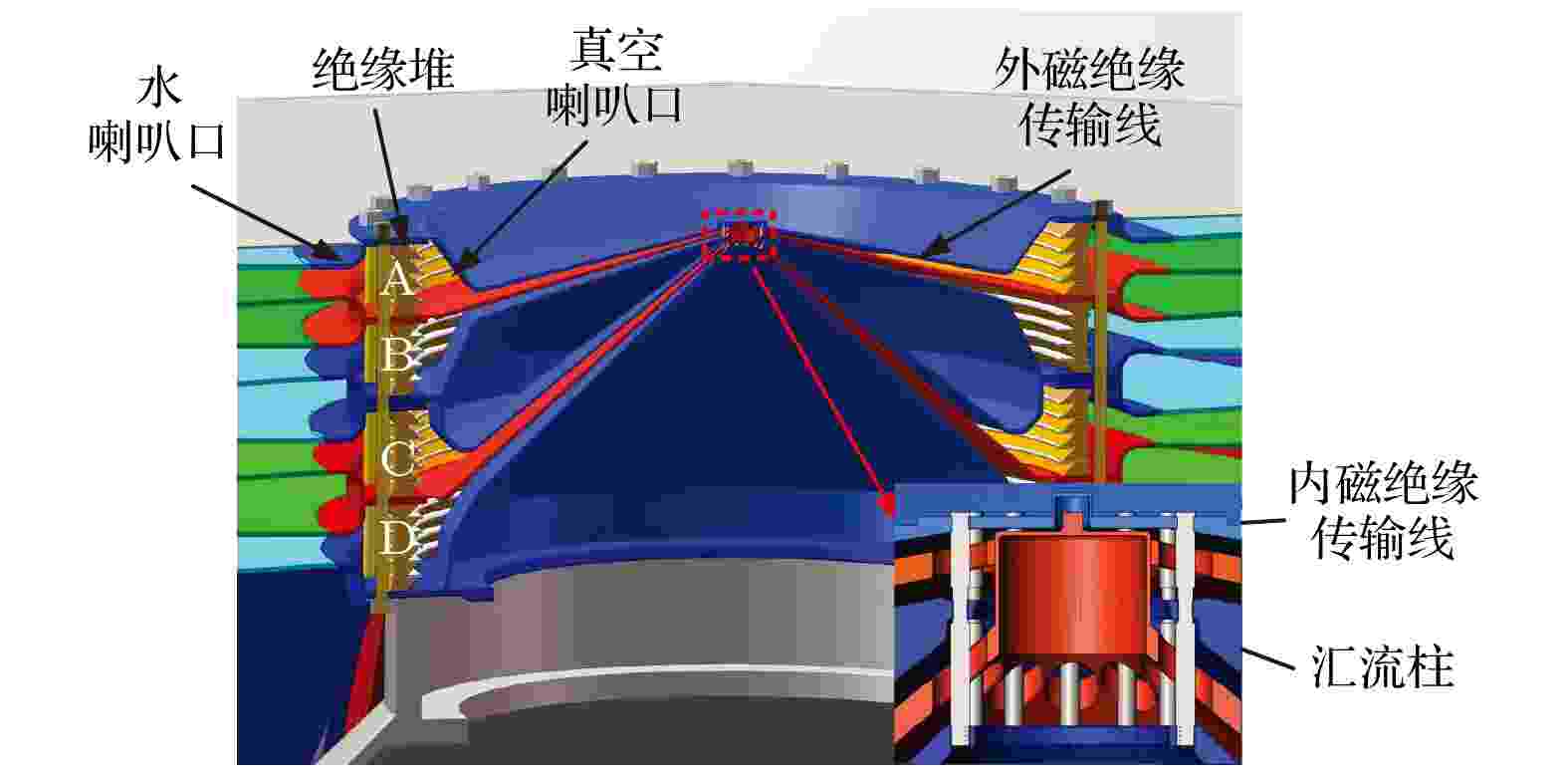
2022, 71 (10): 105202.
doi:10.7498/aps.71.20212378
Abstract +
In this paper, a transmission line circuit model of a magnetically insulated transmission line(MITL) system is developed for a 15-MA Z-pinch driver. The current loss characteristics of multi-level MITL and the ion emission due to the expansion of anode and cathode plasma in the post hole vacuum convolute(PHC) and inner-MITL region are analyzed. The spatiotemporal distribution of current loss of the outer-MITL and ion current of the PHC and inner-MITL of the 15 MA driver are obtained. The results show that the first electron emission happens at the end of constant-impedance MITL and the beginning of constant-gap MITL, and the end of constant-gap MITL firstly achieves fully magnetic insulation. Electron emission occurs at the start of load current and its duration is about 30 ns, which is short for a single pulse and has little effect on the rising edge nor peak value of the load current. The waveform of the electron flow varying with time resembles a saddle shape, whose amplitude first goes up, then comes down, and increases again. The electron flow current decreases from upstream to downstream in constant-gap MITL in space. The starting time of the loss current of the PHC is synchronized with the gap closing time. The loss current amplitude increases rapidly, reaching 4 MA at the peak load current time and 6.5 MA in the end. In the inner-MITL region, the main positive ion species are protons and oxygen 2+. At the beginning, the ion loss current of protons is larger than that of oxygen 2+, and then the protons are quickly magnetically insulated due to the small charge-to-mass ratio. The ion loss current of the inner-MITL region mainly increases after the peak load current time, and its peak value is 2.1 MA. Given the input conditions, the stack is going to deliver current of about 18 MA, the hold voltage is about 2.3 MV, and the peak load current is about 13.5 MA.
CONDENSED MATTER: STRUCTURAL, MECHANICAL, AND THERMAL PROPERTIES
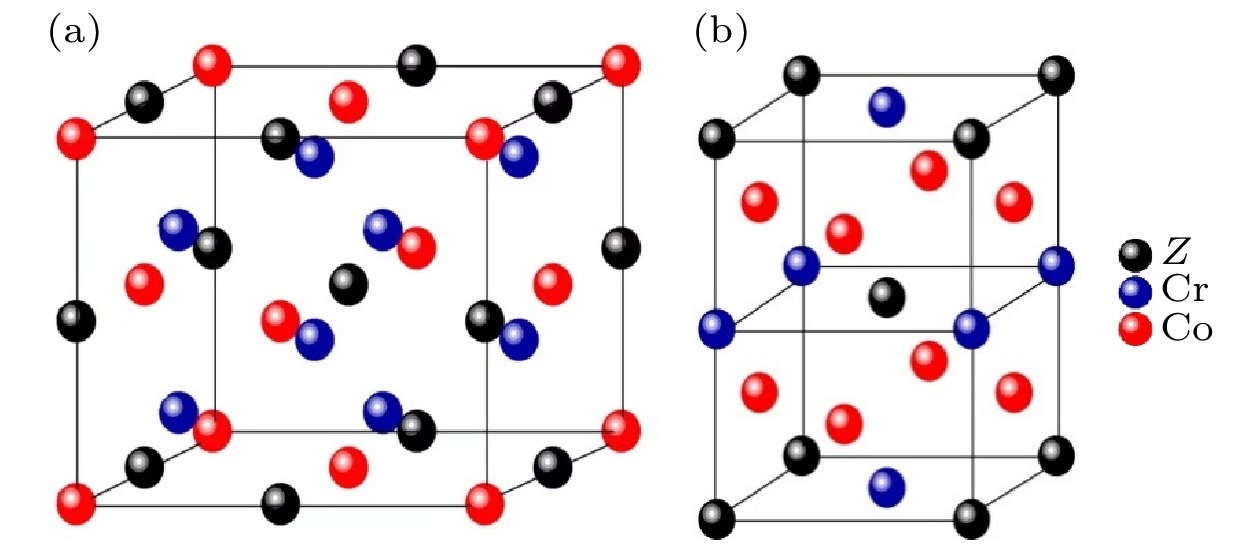
2022, 71 (10): 106201.
doi:10.7498/aps.71.20212254
Abstract +
Using the exact Muffin-Tin orbital method combined with the coherent potential approximation, the effects of magnetic disordering and alloying effects on the phase stability of L21- and D022-Co2CrZ(Z= Ga, Si, Ge) alloys are systematically investigated at 0 K in the present work. It is shown that at 0 K, the lattice parameter, bulk modulus, magnetic moments, and elastic constants of the studied L21alloys are in line with the available theoretical and experimental data. In the ferromagnetic state, these alloys possess L21structure; with the magnetic disordering degree (y) increasing, the energy of the phase increases relatively and finally turns from lower than D022phase to higher than D022phase. As a result, wheny≥ 0.1 (0.2), thenZ= Si and Ge (Z= Ga) alloys are stabilized by the D022phase. Withyincreasing, the tetragonal shear elastic modulus (C'= (C11–C12)/2) also turns soft, indicating that the magnetic disorderingis conducive to the lattice tetragonal deformation in the three alloys from both the energetic view and the mechanical view. The electronic origination of the magnetic disordering effect on the stabilities of the L21and D022phases can be ascribed to the Jahn-Teller instability effect. In the FM L21-Co2CrGa1–xSixand L21-Co2CrGa1–xGexquaternary alloys, withxincreasing, the total magnetic moment increases monotonically according to the Slater-Pauling rule, andC'also stiffens, reflecting that the adding of Si and Ge can promote the mechanical stability of L21-Co2CrGa alloy, thereby depressing the lattice tetragonal deformation.
CONDENSED MATTER: ELECTRONIC STRUCTURE, ELECTRICAL, MAGNETIC, AND OPTICAL PROPERTIES
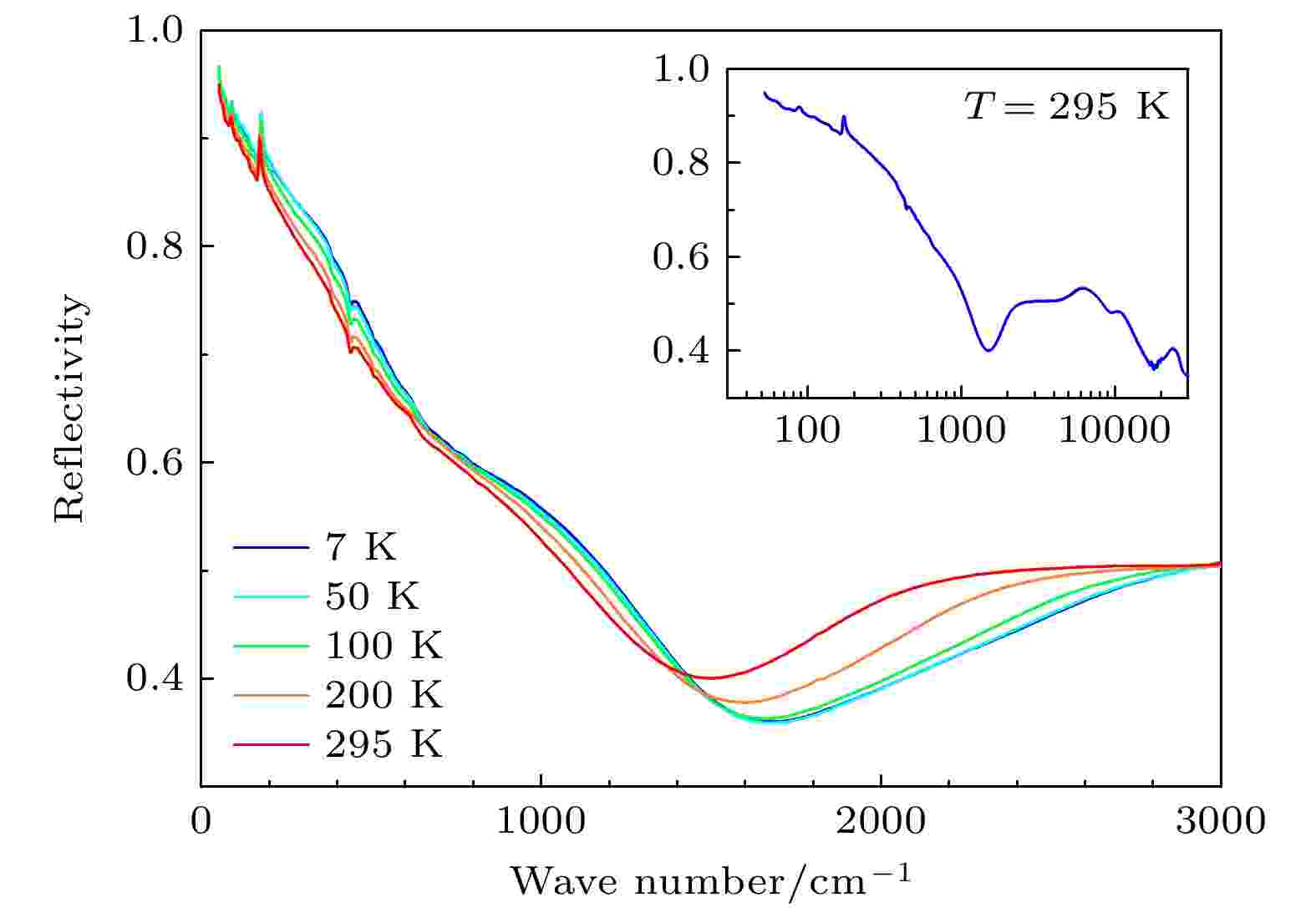
EDITOR'S SUGGESTION
2022, 71 (10): 107201.
doi:10.7498/aps.71.20220011
Abstract +
A detailed infrared optical spectrum of the new topological material BaMnSb2has been measured at temperatures ranging from 7 K to 295 K. As the temperature decreases, the plasma minimum has a clear blue shift in reflectivity spectrum, indicating that the carrier density changes with temperature. In the real part of the optical conductivity
$\sigma_{1}(\omega)$
, two linearly-increased components can be identified, but neither of their extrapolation pass through the origin, which proves that BaMnSb2has a gapped Dirac dispersion near the Fermi level. Comparing with the theoretical calculation by using first-principles methods, the onset of these two linearly-increased components are in good agreement with the band structures. In addition, a range of constant optical conductivity is found in
$\sigma_{1}(\omega)$
, which cannot be described well by the Drude-Lorentz model. Therefore, we introduce a frequency-independent component to fit
$\sigma_{1}(\omega)$
successfully. However, different from the Dirac nodal-line semimetal YbMnSb2which shares same fitting results as well as crystal structure, the constant component in BaMnSb2has a small proportion of
$\sigma_{1}(\omega)$
. Through calculation and analysis, we attribute the constant component to the surface state of BaMnSb2.
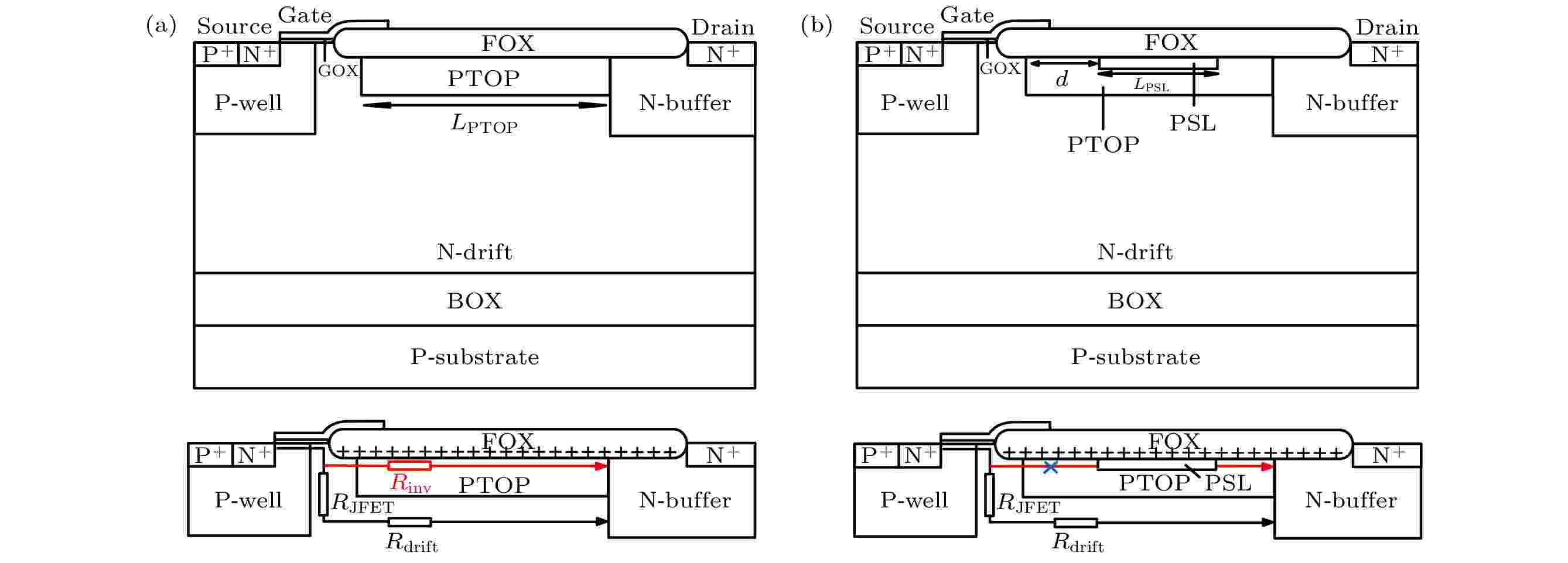
2022, 71 (10): 107301.
doi:10.7498/aps.71.20220041
Abstract +
In this work, the linear current degradation mechanism of 300 V silicon-on-insulator laterally double-diffused metal-oxide-semiconductor field effect transistor under total ionizing effect is studied, and a method in radiation-hardness for linear current by introducing an ultra-thin shielding layer is proposed. This new structure is realized with P-type ultra-thin shielding layer implantation under field oxide, in order to prevent the P-type layer from complete surface inversion, thereby truncating the surface current route and mitigating the current degradation effectively. For a laterally double-diffused metal-oxide-semiconductor field effect transistor, linear current degradation can be attributed mainly to holes introduced in the field oxide. In this work, the influence of introduced holes on electrical properties in the transistor oxides under harsh environment is simulated based on device and process simulation software, with optimized layer length, implantation energy, lateral distance and dose window, and the goal of linear current hardness (linear current increment decreasing from 447% in conventional structure to less than 10% in proposed structure) is achieved while maintaining pre-rad and post-rad breakdown voltages above 300 V under total dose of 0–500 krad(Si).
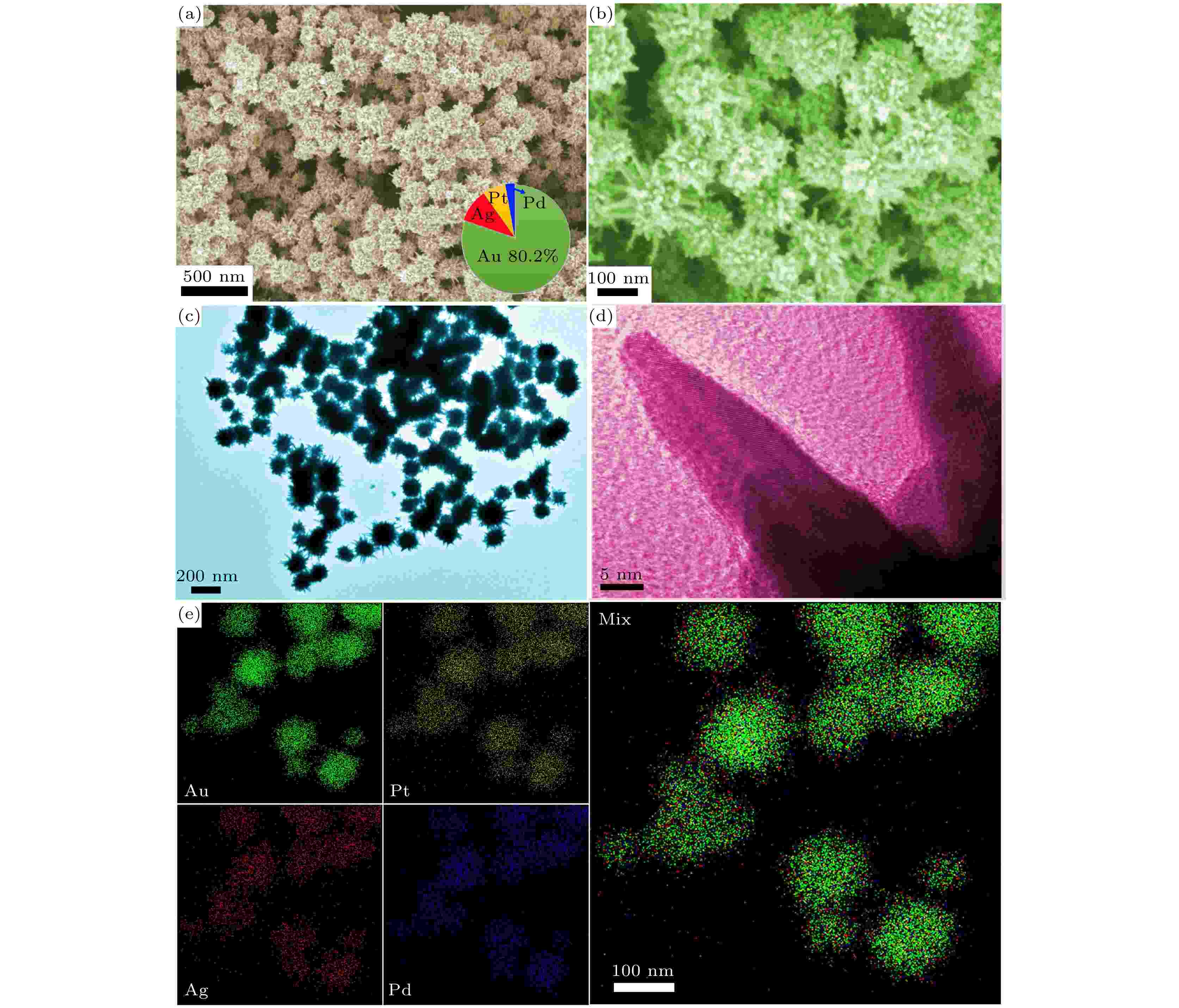
2022, 71 (10): 107401.
doi:10.7498/aps.71.20212094
Abstract +
Compared with the single metal, multi-metallic nanoparticle has excellent localized surface plasmon resonance with a wide spectral range response, which is beneficial to improving both the photoinduced electron transfer efficiency and the effective electron-hole separation. In this work, the urchin-like Au-Ag-Pt-Pd nanoalloy (Au-Ag-Pt-Pd NU) with multiple tentacles is successfully synthesized by the seed growth method and chemical reduction method. And we explore the optical properties of Au-Ag-Pt-Pd NU at different annealing temperatures. The results show that the transient photocurrent intensity of Au-Ag-Pt-Pd NU annealed at 200 ℃ is 1.6 times that of the primitive Au-Ag-Pt-Pd NUs at 808 nm excitation. In addition, the SERS signal intensity of crystal violet (CV) adsorbed on the Au-Ag-Pt-Pd NUs annealed at 200 ℃ is 1.8 times that of the primitive Au-Ag-Pt-Pd NUs at 785 nm excitation. For the Au-Ag-Pt-Pd NUs in this work, the concentration of CV can be detected to be as low as 10–12M. Furthermore, the interesting NIR-SERS sensor enables the detection limit of H2O2at low concentration to reach 0.09–1.02 μmol/L. The results show that the obtained nanoalloy has excellent photoelectric response characteristics and high SERS sensitivity due to the synergistic effect of multi-metal. Thus, it possesses great potential for biological NIR detection in the future.
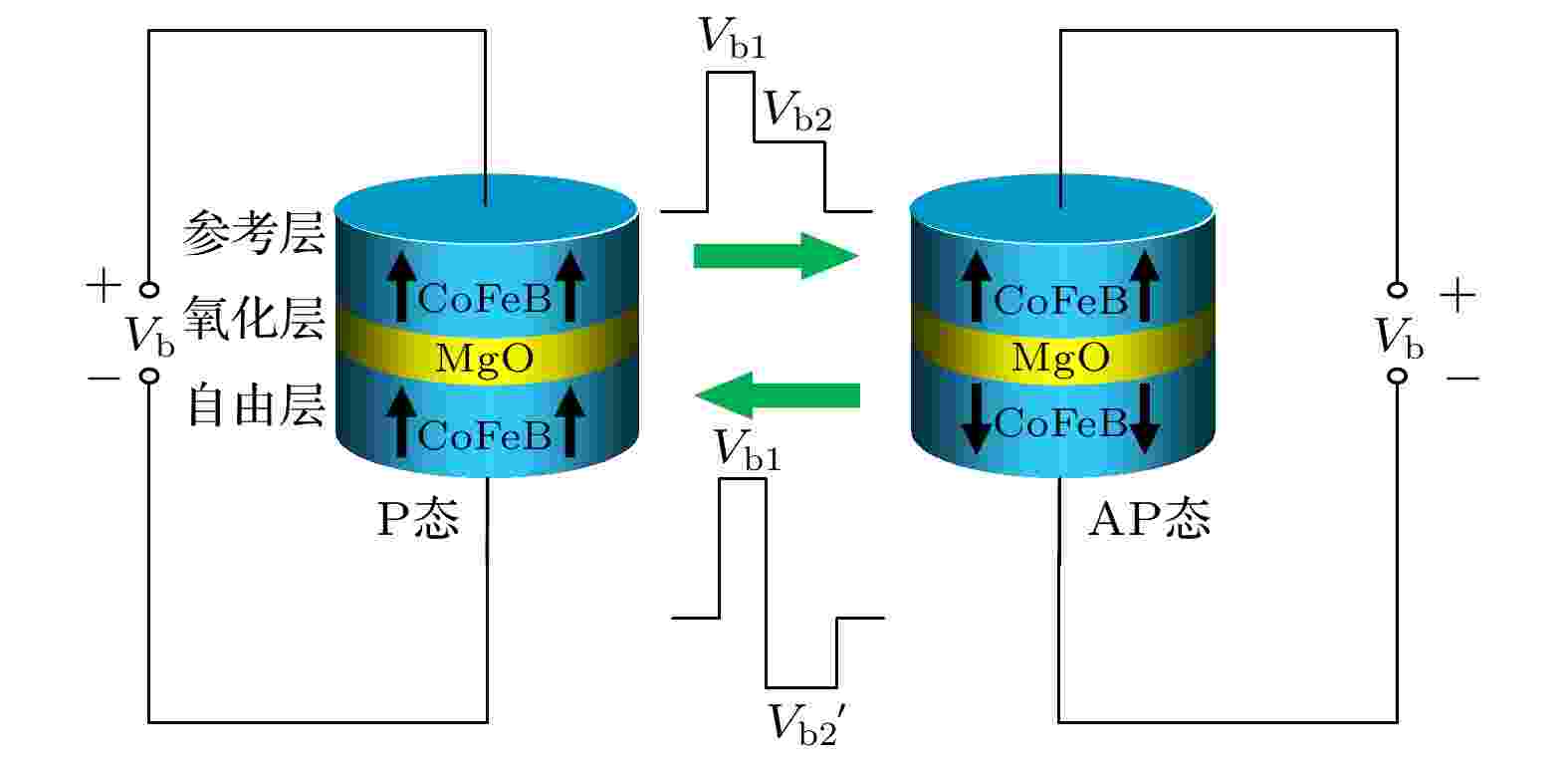
2022, 71 (10): 107501.
doi:10.7498/aps.71.20211700
Abstract +
As one of the key components in the non-volatile full adder (NV-FA), spin transfer torque assisted voltage controlled magnetic anisotropy magnetic tunnel junction (STT assisted VCMA-MTJ) will possess superior development prospects in internet of things, artificial intelligence and other fields due to its fast switching speed, low power consumption and good stability. However, with the downscaling of magnetic tunnel junction (MTJ) and the improvement of chip integration, the effects of process deviation on the performances of MTJ device as well as NV-FA circuit become more and more important. Based on the magnetization dynamics of STT assisted VCMA-MTJ, a new electrical model of STT assisted VCMA-MTJ, in which the effects of the film growth variation and the etching variation are taken into account, is established to study the effects of the above deviations on the performances of MTJ device and NV-FA circuit. It is shown that the MTJ state fails to be switched under the free layer thickness deviationγtf≥ 6% or the oxide layer thickness deviationγtox≥ 0.7%. The sensing margin (SM) is reduced by 17.5% as the tunnel magnetoresistance ratio deviationβincreases to 30%. The writing error rate can be effectively reduced by increasingVb1, and increasingVb2when writing ‘0’ or reducingVb2when writing ‘1’ in the NV-FA circuit. The output error rate can also be effectively reduced by increasing the driving voltage of logical operationVdd.

2022, 71 (10): 107801.
doi:10.7498/aps.71.20212375
Abstract +
Based on the electromagnetic properties of all-dielectric optical metamaterial, an all-dielectric metasurface of lattice-perturbed nanohole array is proposed to excite a multiple Fano resonance in the near-infrared region. Combined with the group theory, the formation mechanism and evolution law of multiple Fano resonances in this structure when its unit cell is a square lattice configuration and the square lattice symmetry is broken are explored in depth. The results show that double degenerate mode directly excited by the normal incident plane wave is coupled to vertical free-space radiation continuum to form double Fano resonance when unit cell is symmetrical, while the uncoupled non-degenerate modes excited by the normal incident plane wave is coupled to vertical free-space radiation continuum to form triple Fano resonance with higherQfactor when the symmetry is broken. Numerical simulation is used to explore the influences ofx-polarized andy-polarized plane wave on the above Fano resonances, and the results show that the Fano resonance of double degenerate resonance is polarization independent, while the non-degenerate resonance is polarization dependent. The findings in this work can provide an effective theoretical reference for designing other square lattice metasurface to realize the excitation and evolution of multiple Fano resonances.
INTERDISCIPLINARY PHYSICS AND RELATED AREAS OF SCIENCE AND TECHNOLOGY
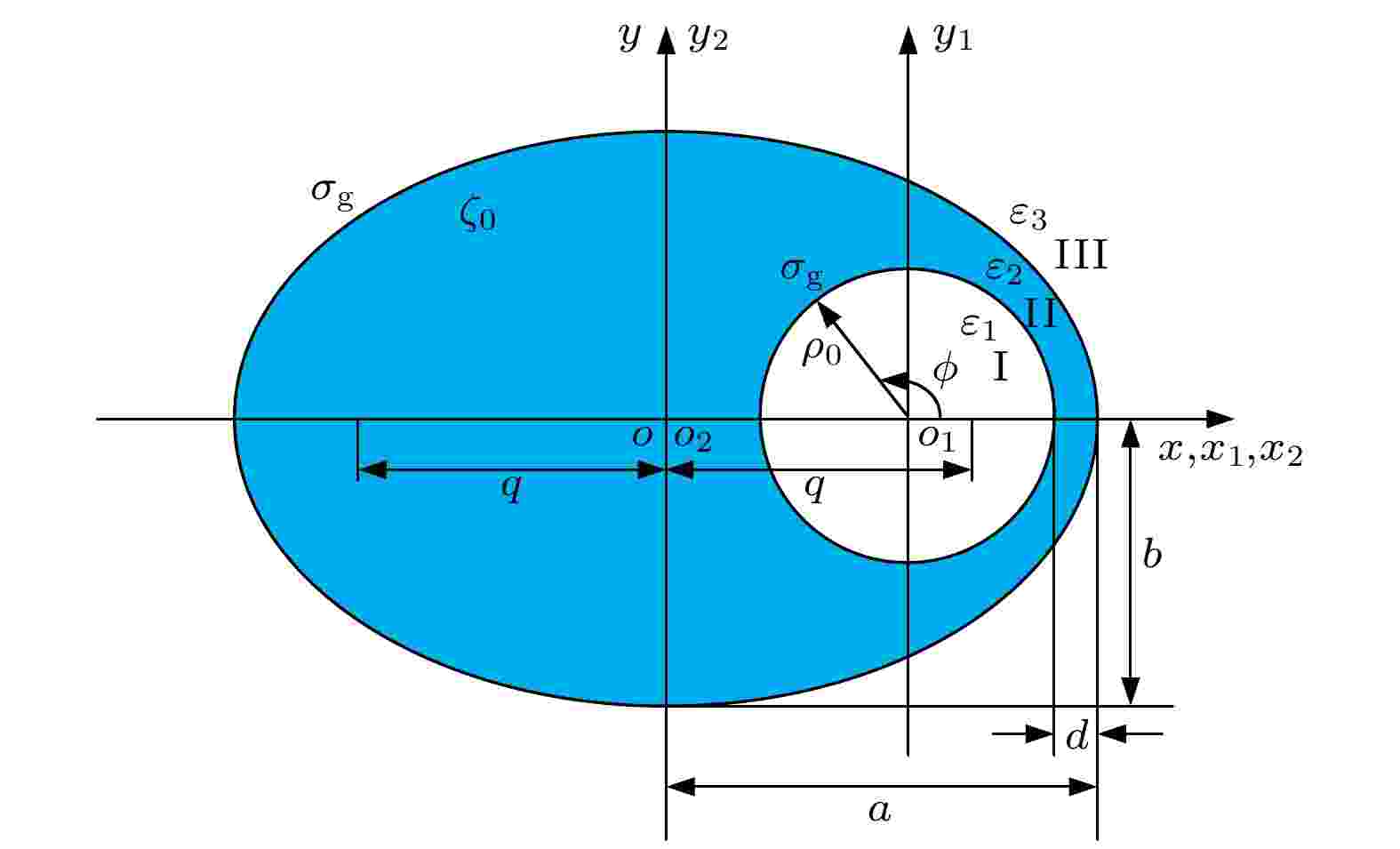
2022, 71 (10): 108101.
doi:10.7498/aps.71.20212321
Abstract +
An elliptical dielectric nanowire waveguide with a nested eccentric hollow cylinder is designed, the inner surface and the outer surface of the waveguide are both coated with graphene. The transmission characteristics of the three lowest order modes supported by the waveguide, i.e. the field distribution, the real part of the effective refractive index, the propagation length, and the quality factor, are obtained by multipole method. The results show that the three lowest order modes of the waveguide can be synthesized by the lowest order modes supported by a single cylinder and an elliptic cylinder coated with graphene. With the increase of the radius of the embedded cylinder, the three evaluation indexes of the waveguide increase slightly. The change of the semi major axis of the ellipse will slightly increase the real part of the effective refractive index, propagation length and quality factor of Mode 0 and Mode 1, while Mode2 will slightly decrease. When
$a = {{b}} = 170\;{\rm{nm}}$
, the performance of the circular nested circular waveguide becomes slightly worse than that of the structure in this paper. With the decrease of the semi minor axis of the ellipse, the real part of the effective refractive index, propagation length and quality factor for each of the three modes increase to a certain extent, and have the greatest impact on Mode 1. When
${{b}} = {{a}} = 190\;{\rm{nm}}$
, the transmission performance of the circular nested circular waveguide is not so good as that of the structure in this paper. When the distance between the inner rod and the outer rod on the right side increases, the real part of the effective refractive index for each of the three modes decreases, the propagation length and quality factor of Mode 0 and Mode1 gradually decrease, while the propagation length of Mode 2 increases slightly, and the quality factor is basically unchanged. On the contrary, the mode transmission performance can be significantly improved by increasing the working wavelength and Fermi energy and reducing the dielectric constant of elliptical dielectric nanowires. Compared with the circular dielectric nanowire waveguide nested with an eccentric hollow cylinder coated with graphene, the waveguide designed in this paper can be found to have a good transmission performance. These results are verified by the finite element method. This waveguide can provide a theoretical basis for the design, fabrication and application of nested waveguides of the same type.
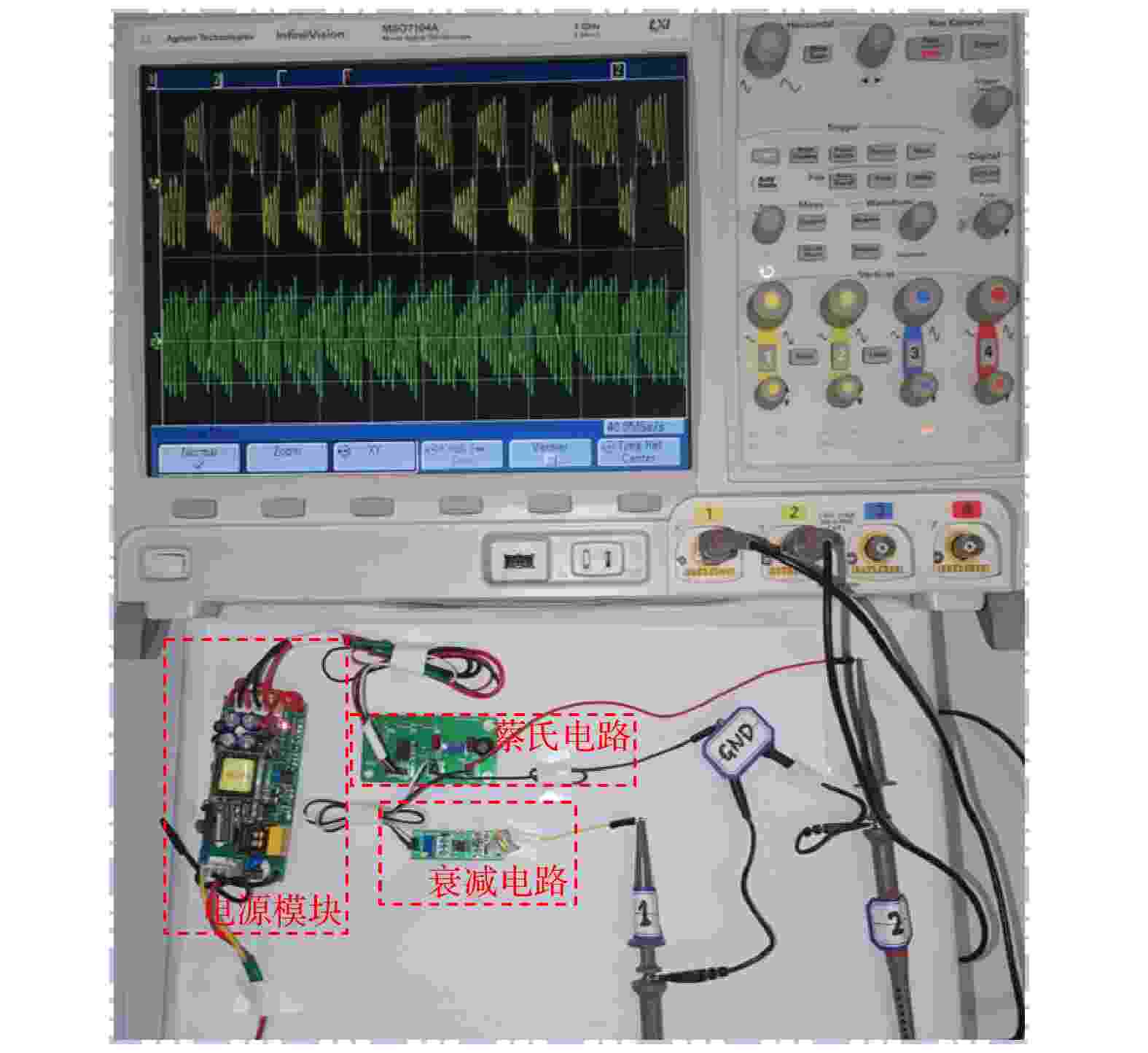
2022, 71 (10): 108401.
doi:10.7498/aps.71.20212274
Abstract +
Chaotic time series can well reflect the nonlinearity and non-stationarity of real environment changes. The traditional kernel adaptive filter (KAF) with second-order statistical characteristics suffers performance degeneration dramatically for predicting chaotic time series containing noises and outliers. In order to improve the robustness of adaptive filters in the presence of impulsive noise, a nonlinear similarity measure named Cauchy kernel loss (CKL) is proposed, and the global convexity of CKL is guaranteed by the half-quadratic (HQ) method. To improve the convergence rate of stochastic gradient descent and avoid a local optimum simultaneously, the conjugate gradient (CG) method is used to optimize CKL. Furthermore, to address the issue of kernel matrix network growth, the Nyström sparse strategy is adopted to approximate the kernel matrix and then the probability density rank-based quantization (PRQ) is used to improve the approximation accuracy. To this end, a novel Nyström Cauchy kernel conjugate gradient with PRQ (NCKCG-PRQ) algorithm is proposed for the prediction of chaotic time series in this paper. Simulations on prediction of synthetic and real-world chaotic time series validate the advantages of the proposed algorithm in terms of filtering accuracy, robustness, and computational storage complexity.

2022, 71 (10): 108501.
doi:10.7498/aps.71.20212192
Abstract +

2022, 71 (10): 108701.
doi:10.7498/aps.71.20212303
Abstract +
Terahertz metamaterial biosensor is a label-free affinity sensor that enhances the strength of the local electromagnetic field. It is extremely sensitive to changes in the dielectric constant of the surrounding environment, thereby providing a new method of detecting micro or trace biological samples. In this work, a highly sensitive terahertz refractive index metamaterial absorber sensor for detecting the biological sample is proposed. The sensor consists of two concentric open metal rings and is a multimode resonator. With two independent adjustable operating bands in a frequency range of 0.7–2.5 THz, i.e. 1.079 THz and 2.271 THz, the sensor can observe different electromagnetic effects of the sample in the terahertz band. We evaluate the performance of terahertz sensors with indicators such as absorption characteristics and sensitivity. The sensor possesses the absorption higher than 99.9% in free space. In addition, the large Q value indicates that the sensor provides high frequency selectivity characteristics. Especially, the sensitivity of the sensor achieves 693.7 GHz/RIU, with a minimum refractive index change of 0.004 for the detection of biological samples, which provides good sensing performance. In the proposed sensor, a flexible material with low dielectric constant is used, which has the advantages of biocompatibility and portability and shows high stability at the 0°–60° oblique incidence angle and within 4% fabrication error. Moreover, the detection effectiveness of the sensor is verified by simulation experiments with ethanol-water mixtures. The sensor units designed in this paper have small interactions among them, work stably and are easily fabricated The sensor can significantly enhance the interaction between light and matter and has broad application prospects in terahertz high-sensitivity biosensing detection.
GEOPHYSICS, ASTRONOMY, AND ASTROPHYSICS
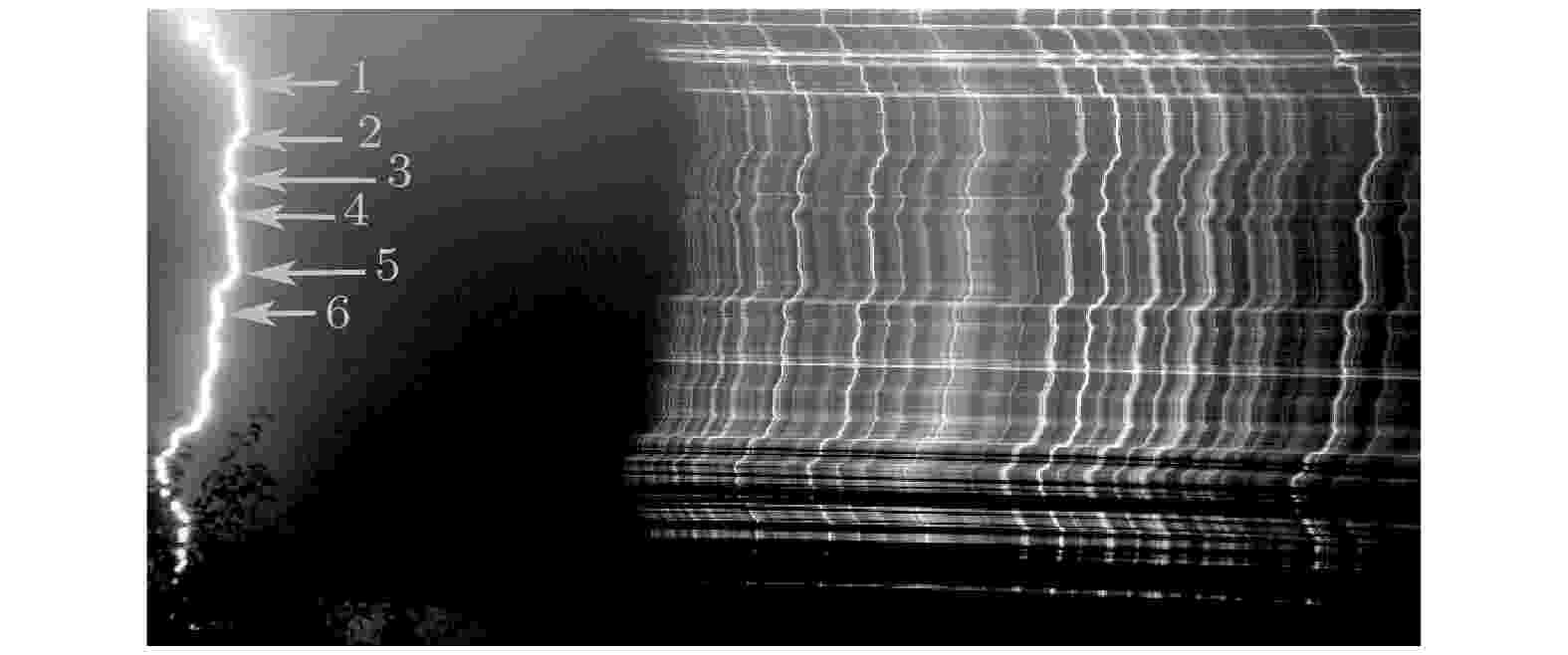
2022, 71 (10): 109201.
doi:10.7498/aps.71.20211673
Abstract +
The spectral data of a lightning discharge process are captured by a high-speed slit-less grating spectrograph. Based on the plasma spectrum theory, the lightning return stroke channel temperature is estimated according to the spectral information of the different bands. The results show that the average temperatures of the lightning return stroke channel estimated by the Boltzmann plot method are 43270, 17660 and 17730 K, respectively, when the spectral line group of the single ionized nitrogen atom (NII), neutral oxygen atom (OI) and neutral nitrogen atom (NI) are selected respectively. The average temperature of the lightning return stroke channel is 24770 K, which is estimated based on the Saha-Boltzmann plot method by using NII and NI spectral line groups. Based on the lightning channel corona sheath model and the spectral radiation theory, it can be inferred that the temperature obtained by using only NII spectral line group should be the temperature of the lightning return stroke channel core, and the temperature obtained by using only NI or OI spectral line group should be the temperature of the corona sheath around the lightning return stroke channel core. Using both NII and NI spectral line groups, the obtained temperature should be the average temperature of the entire channel section (including the channel core and corona sheath) in the exposure time.
















